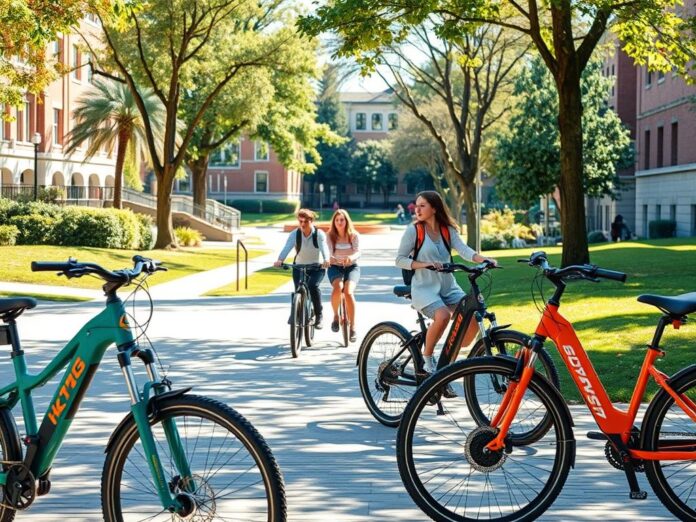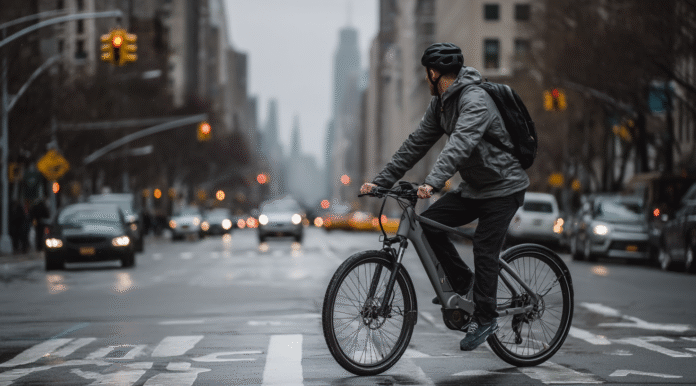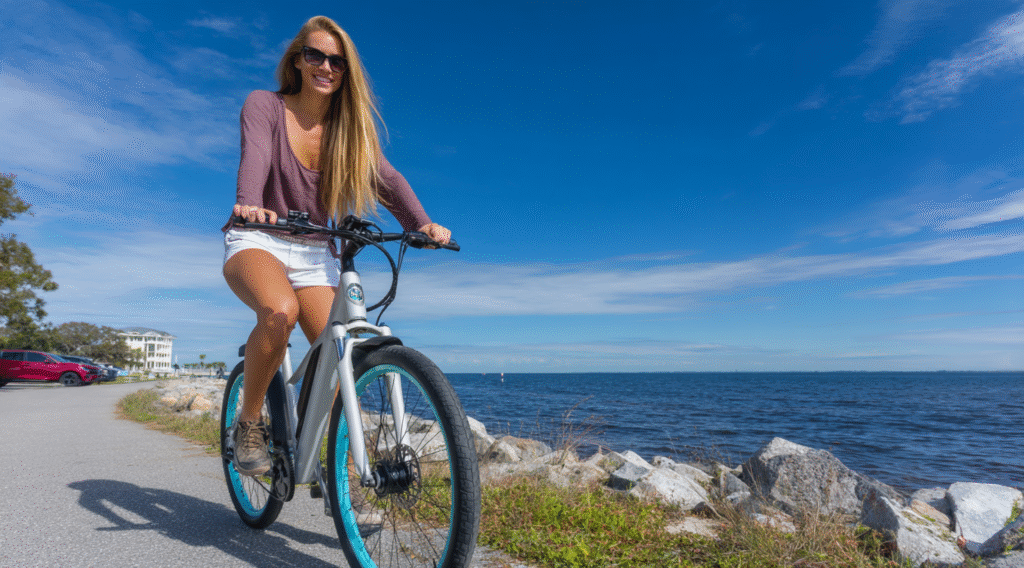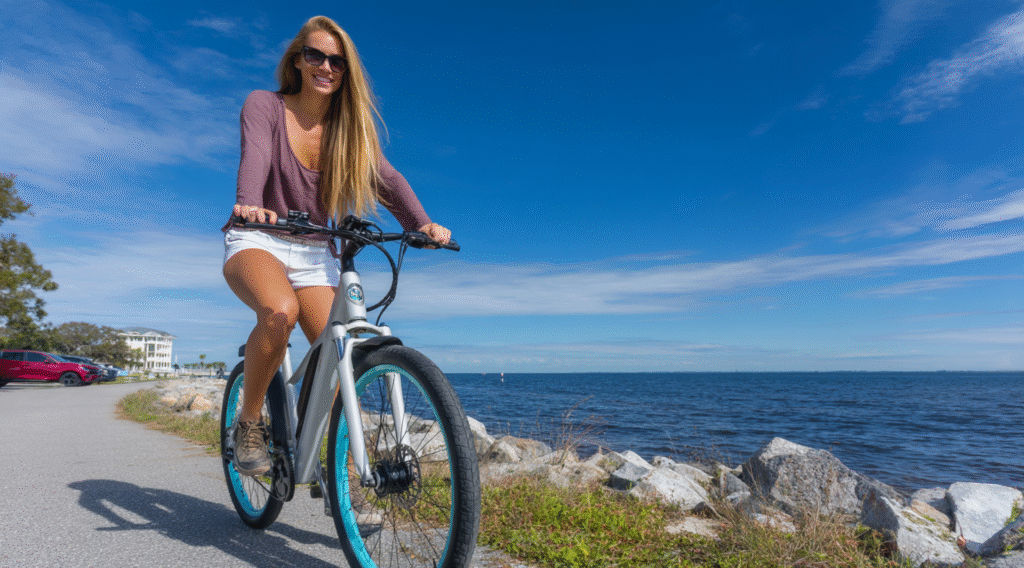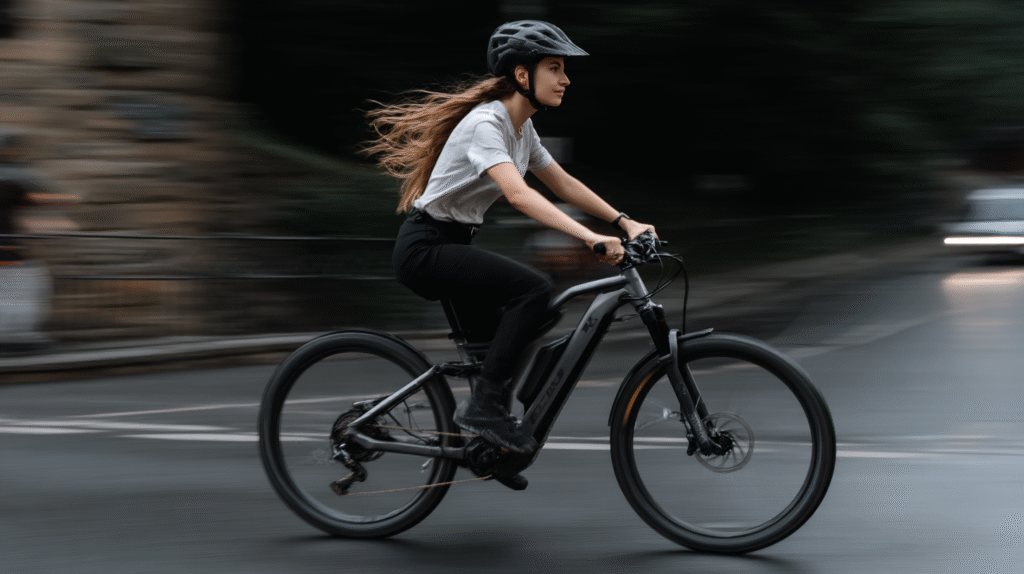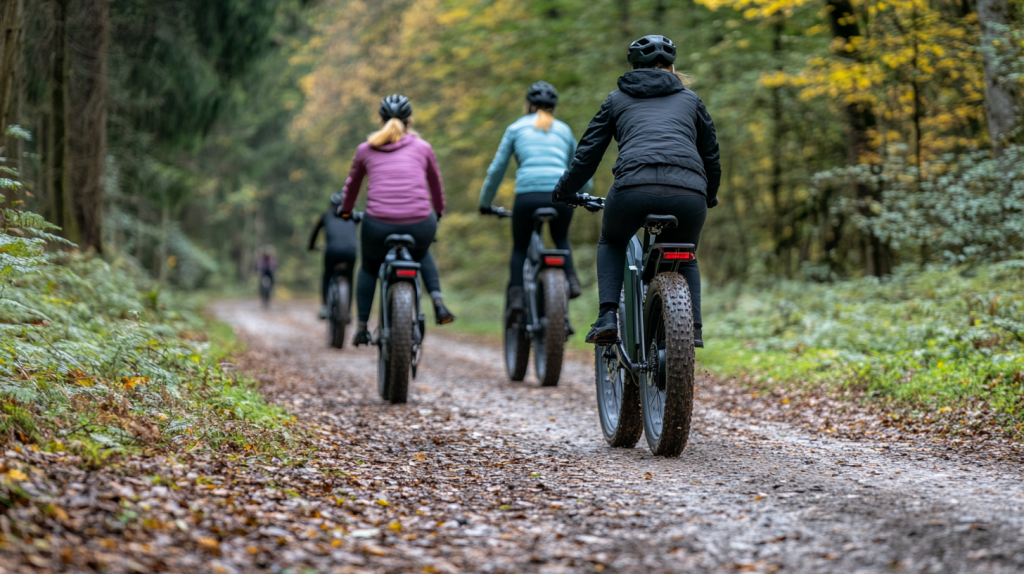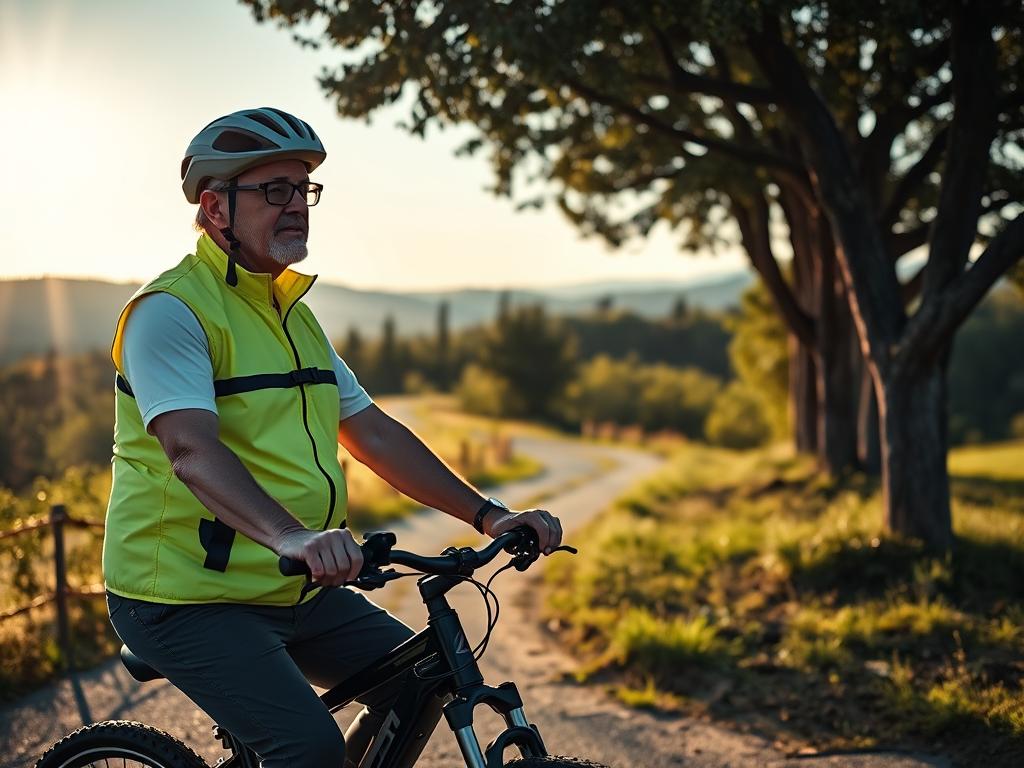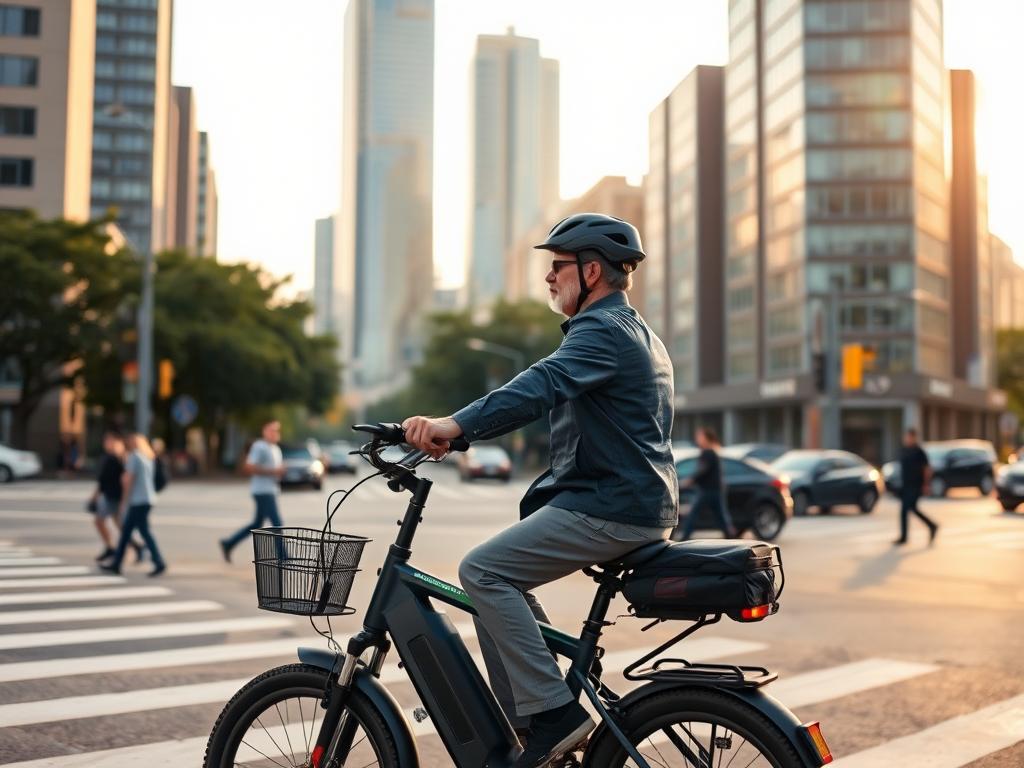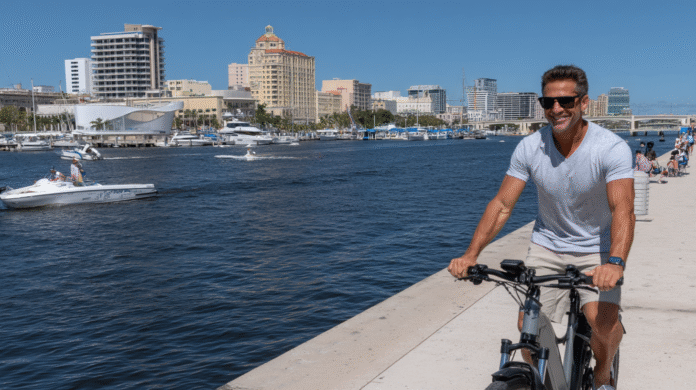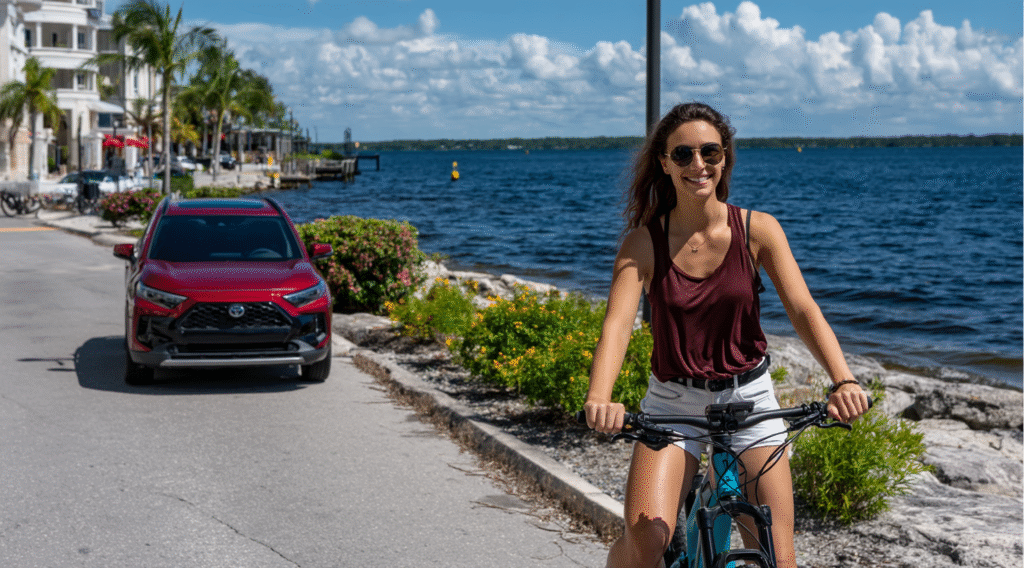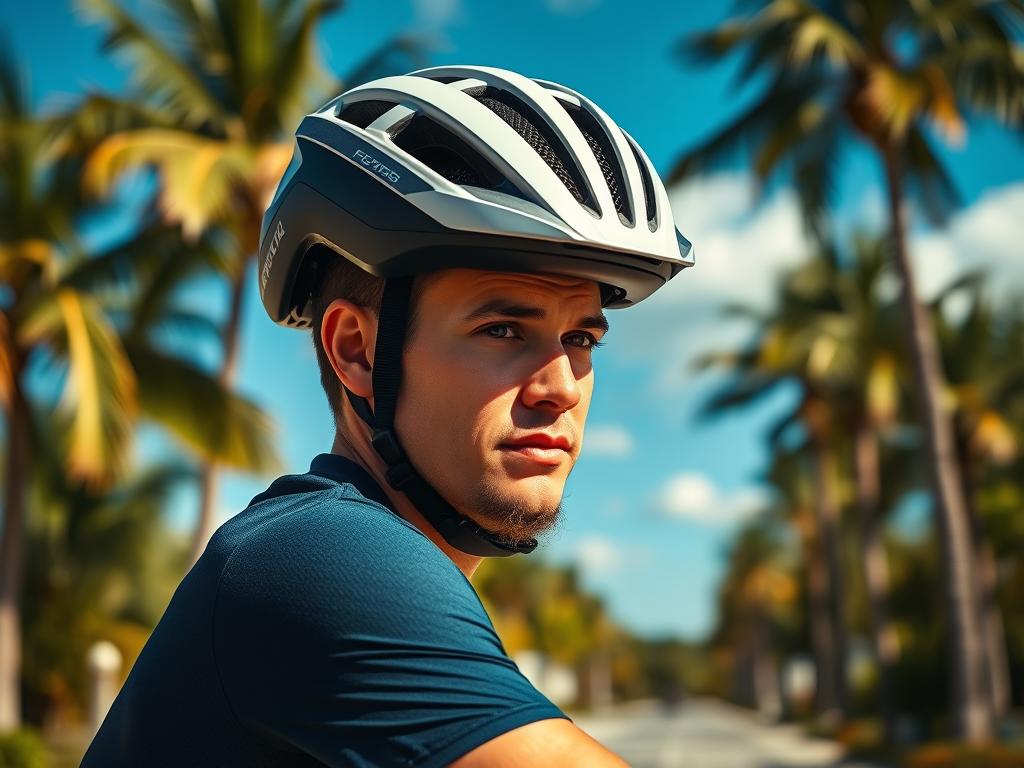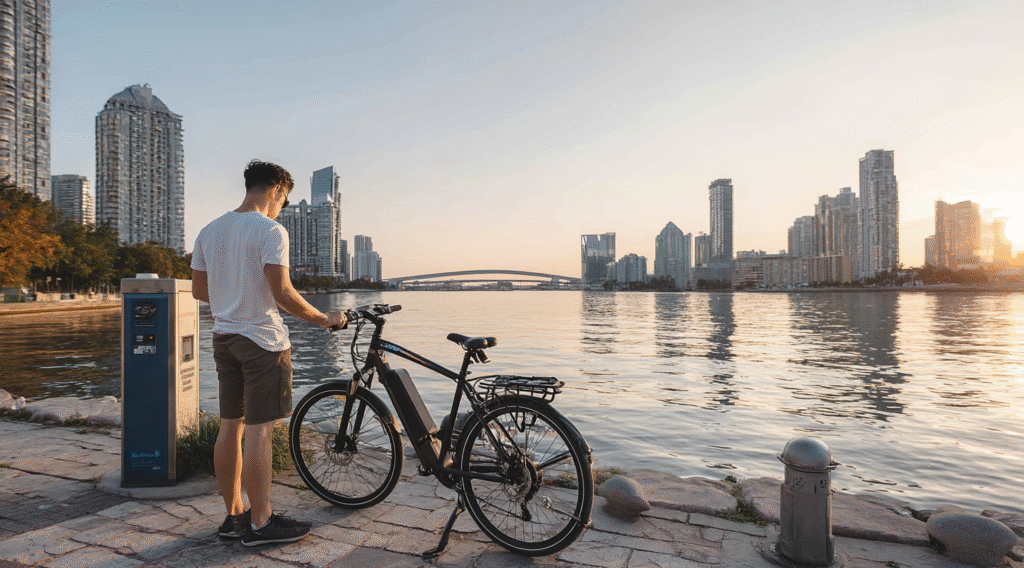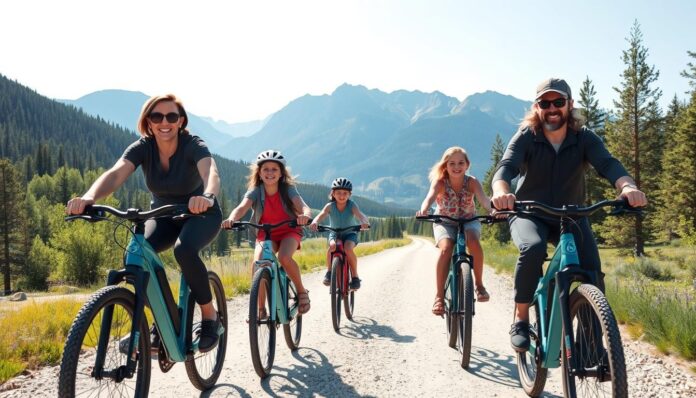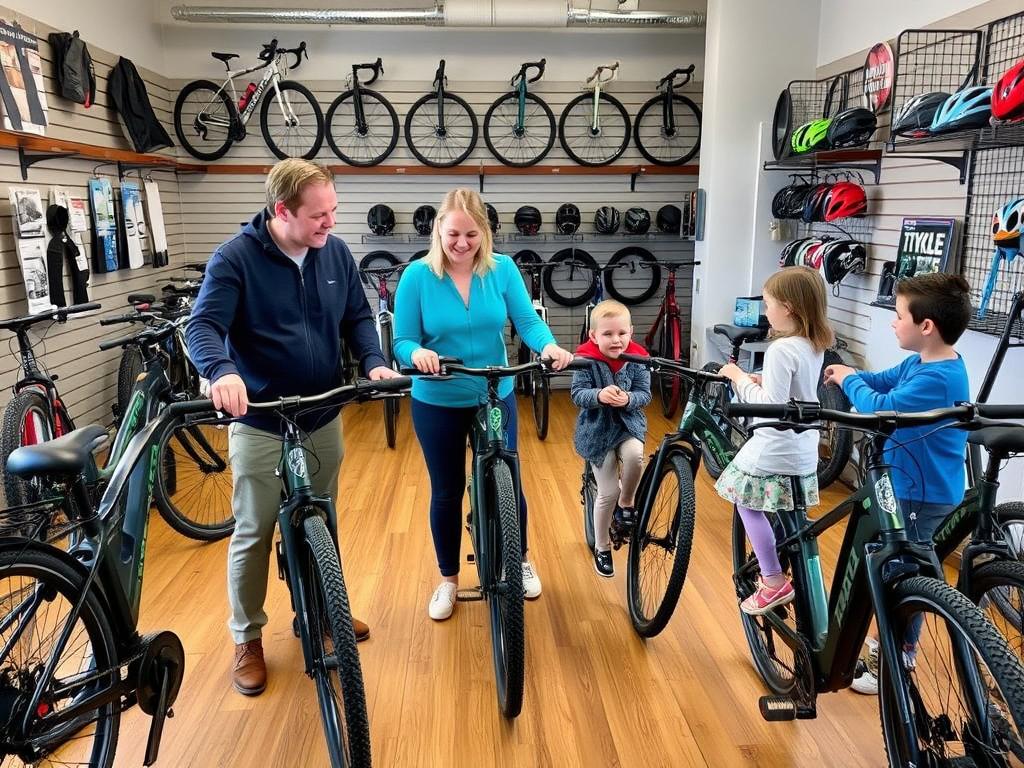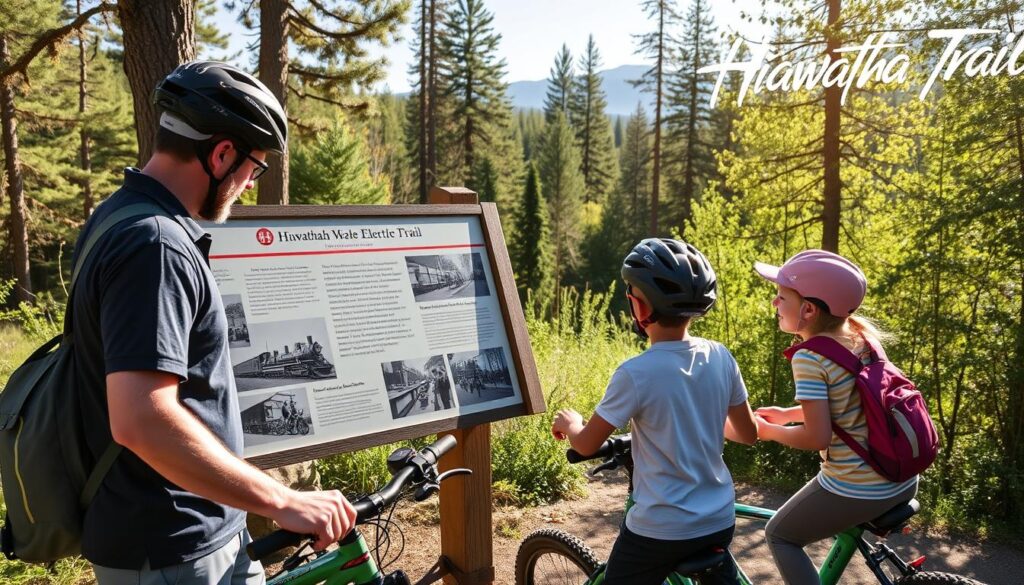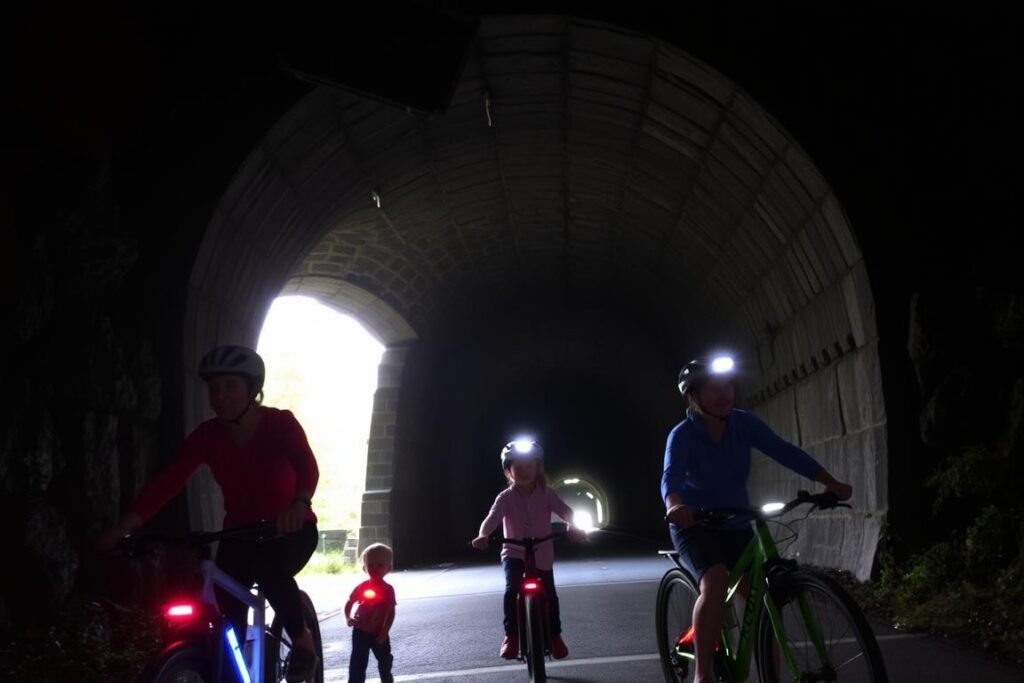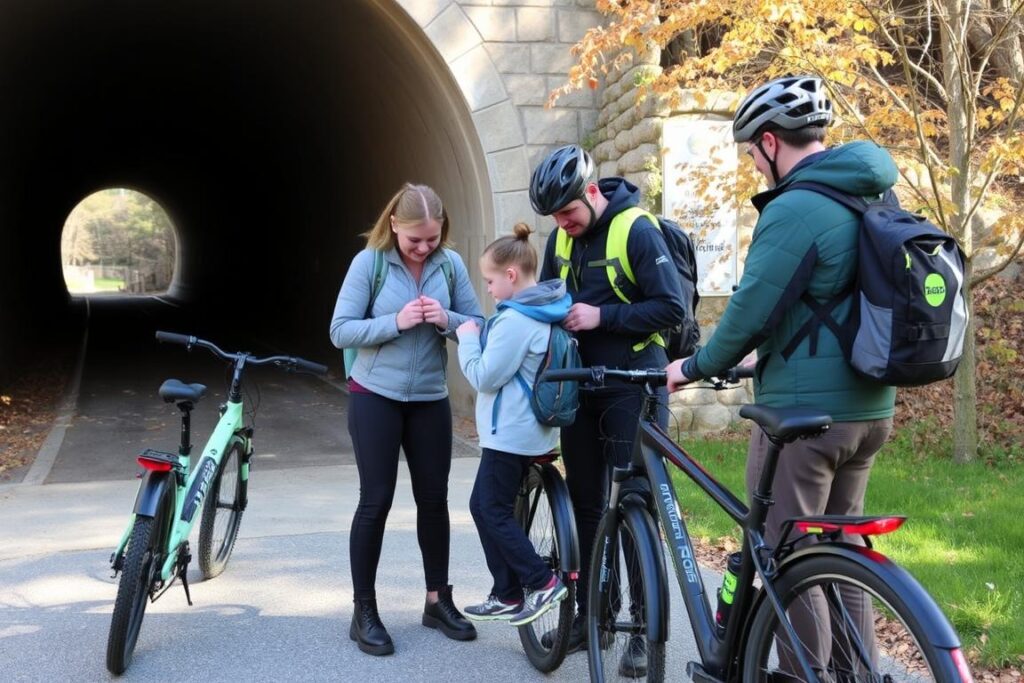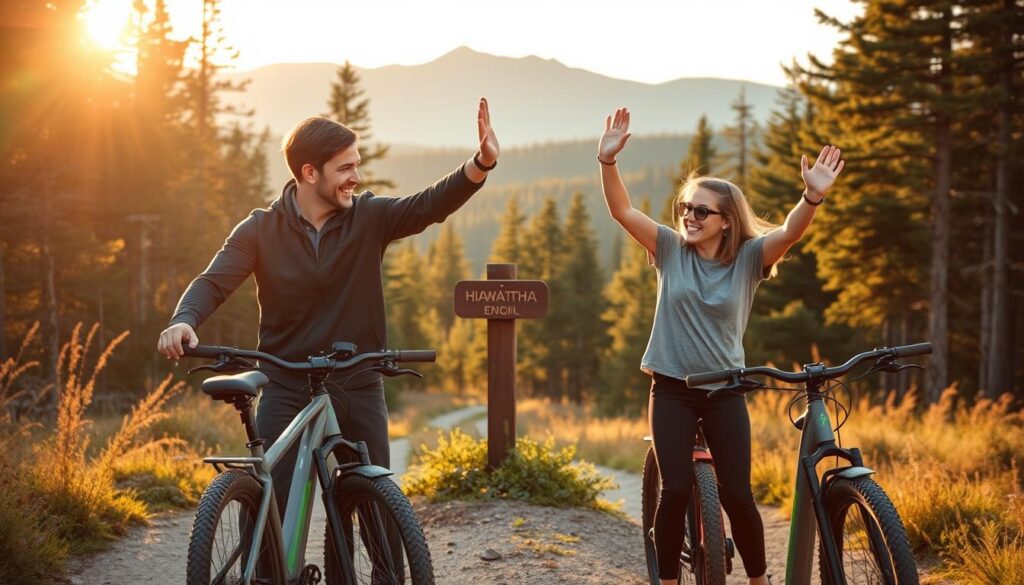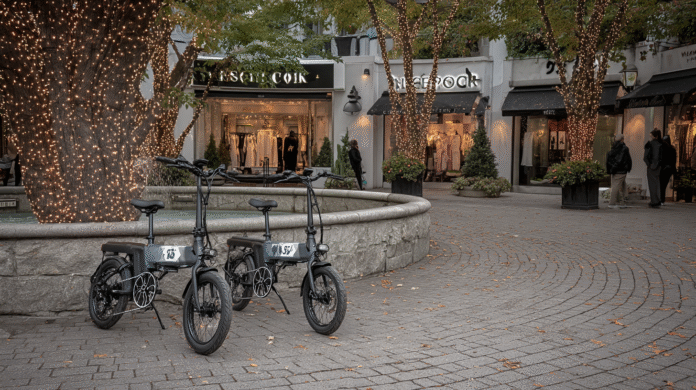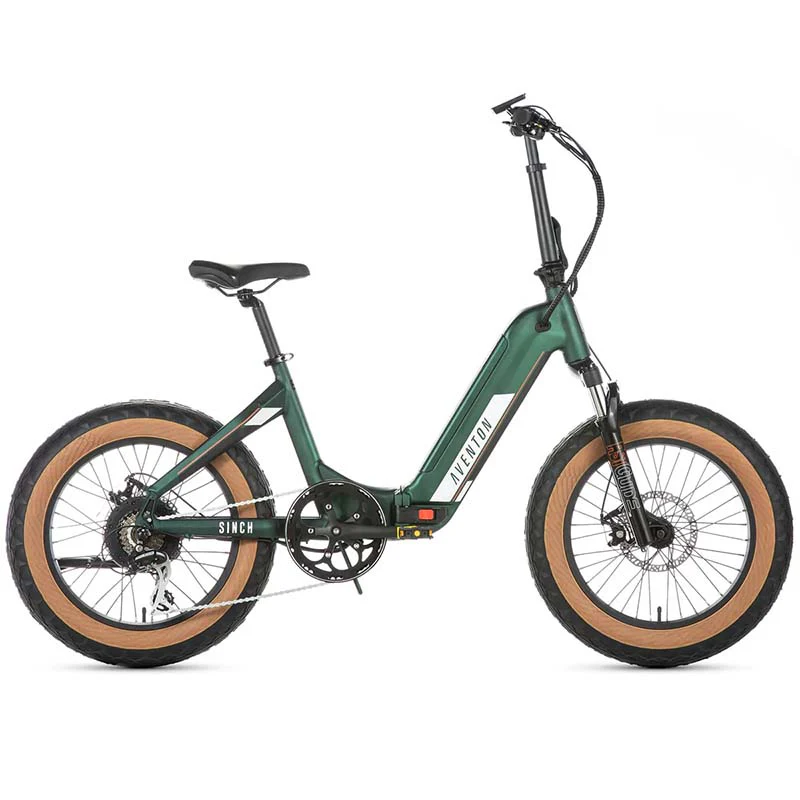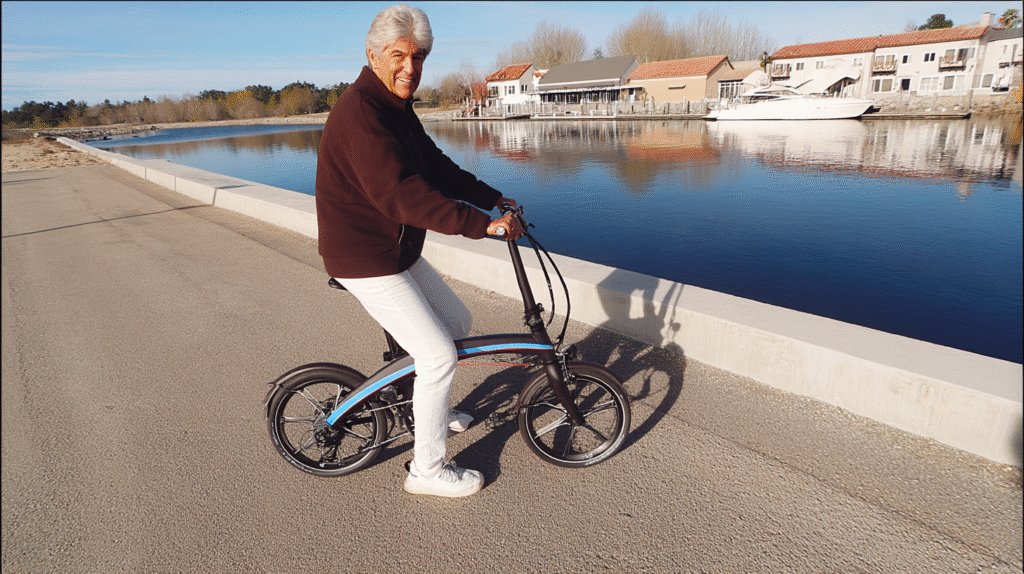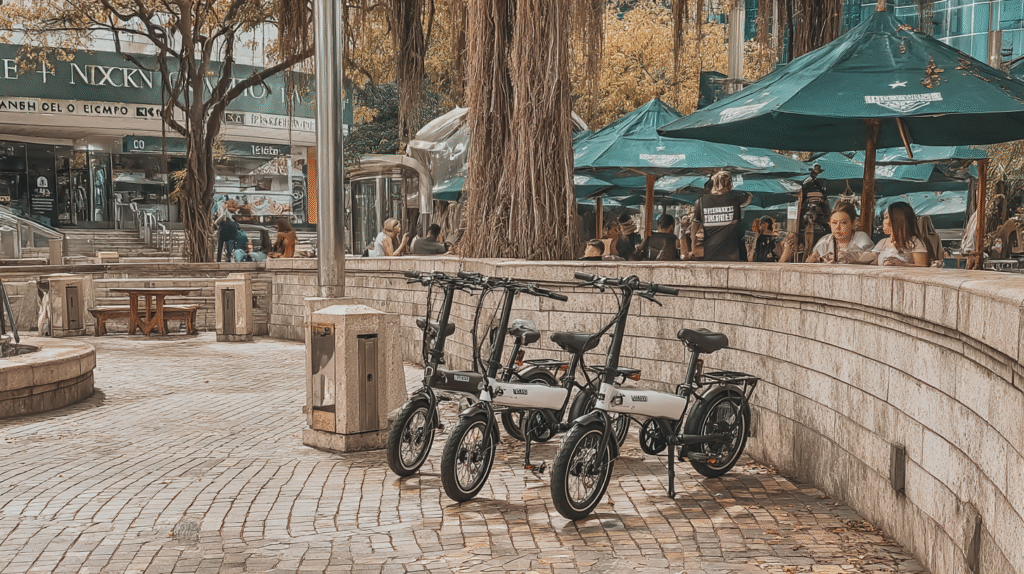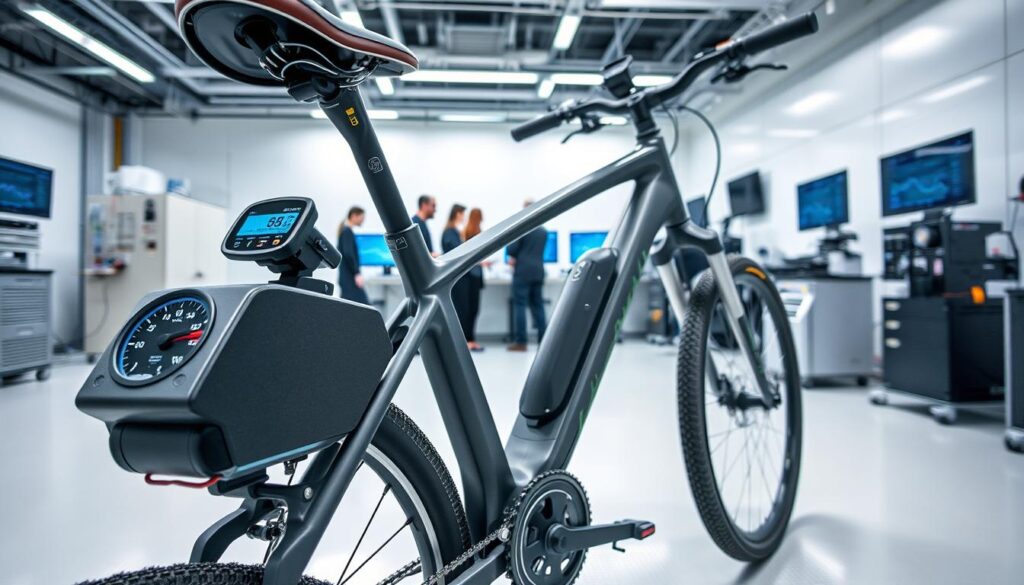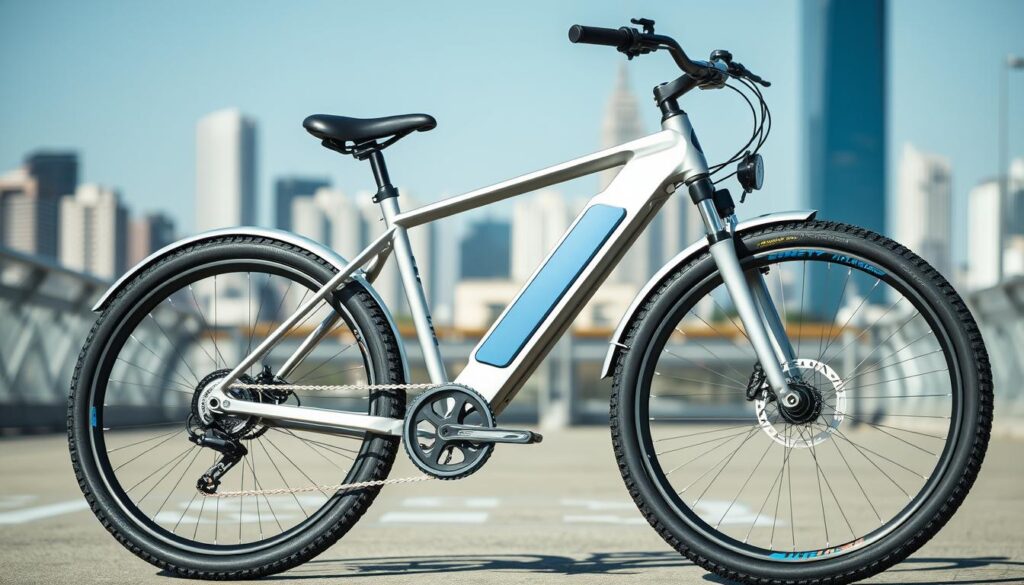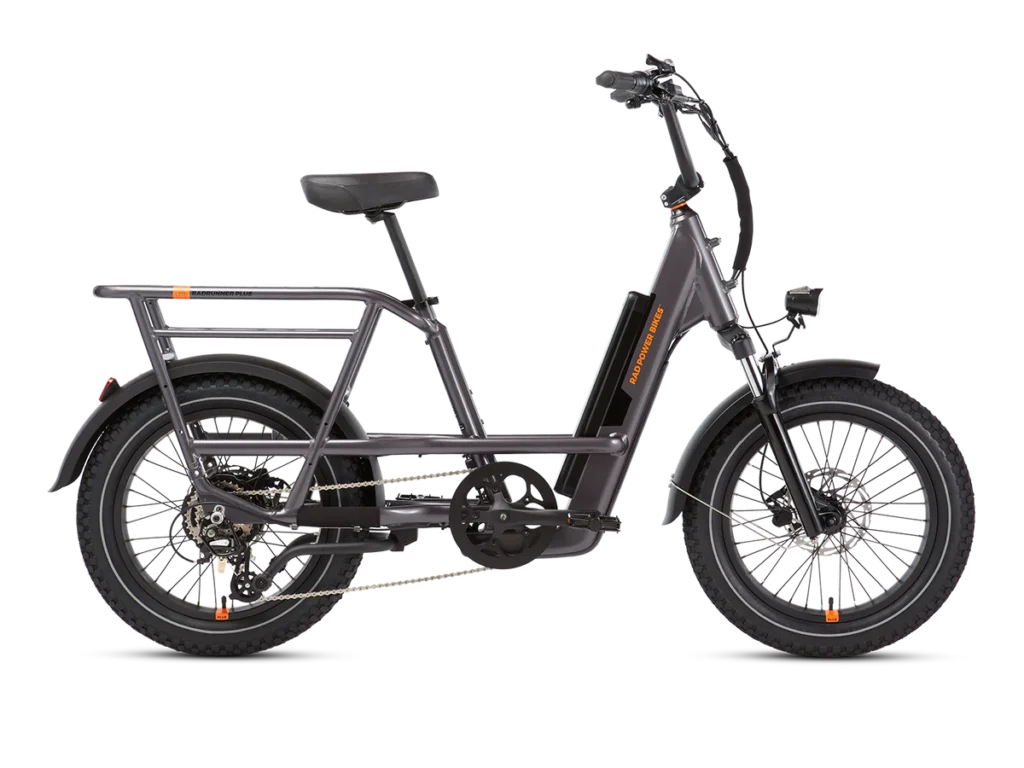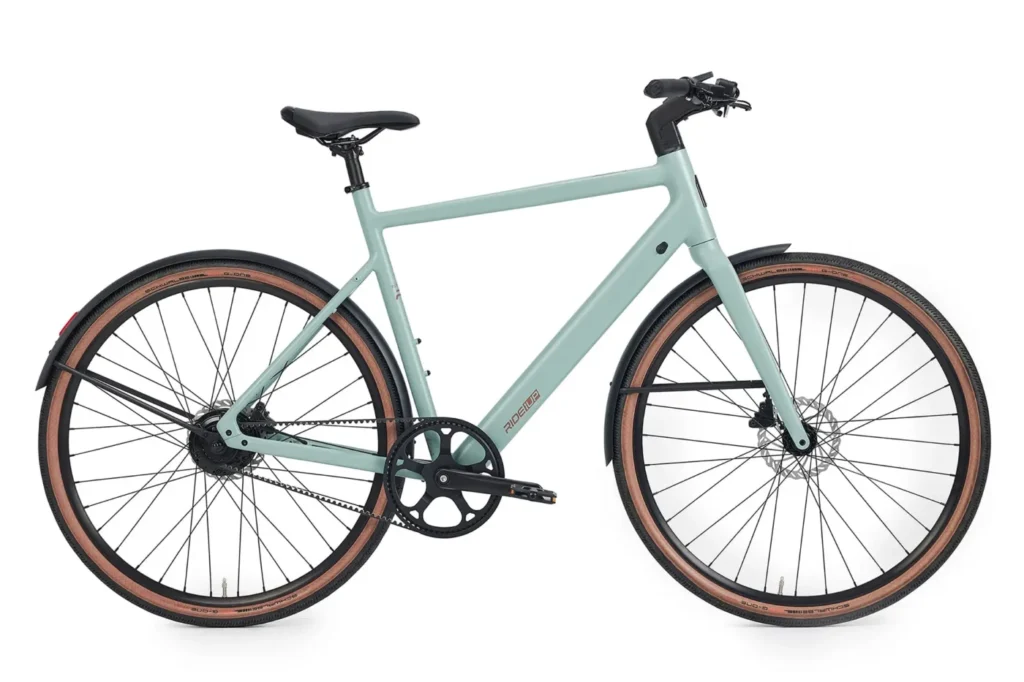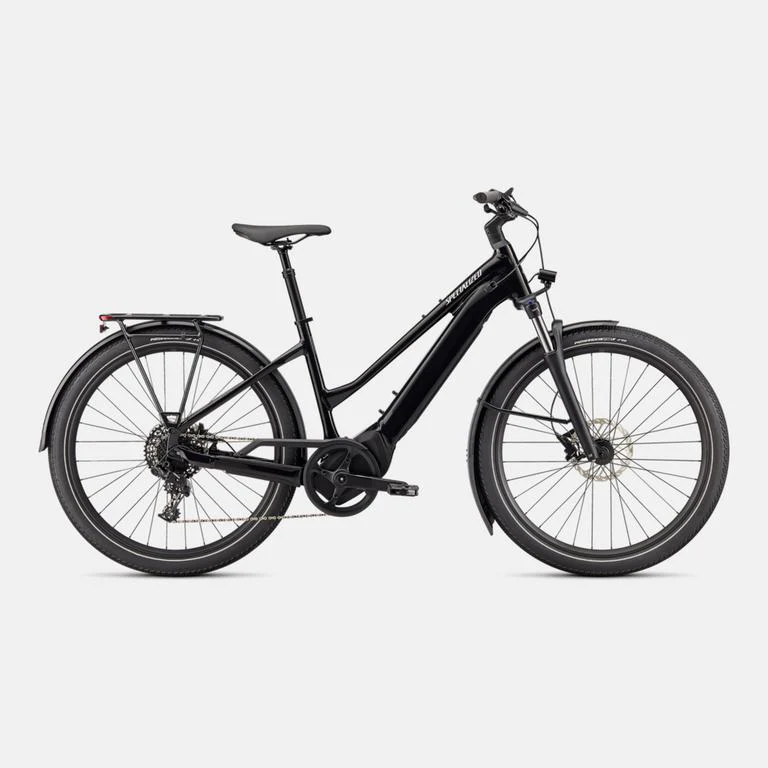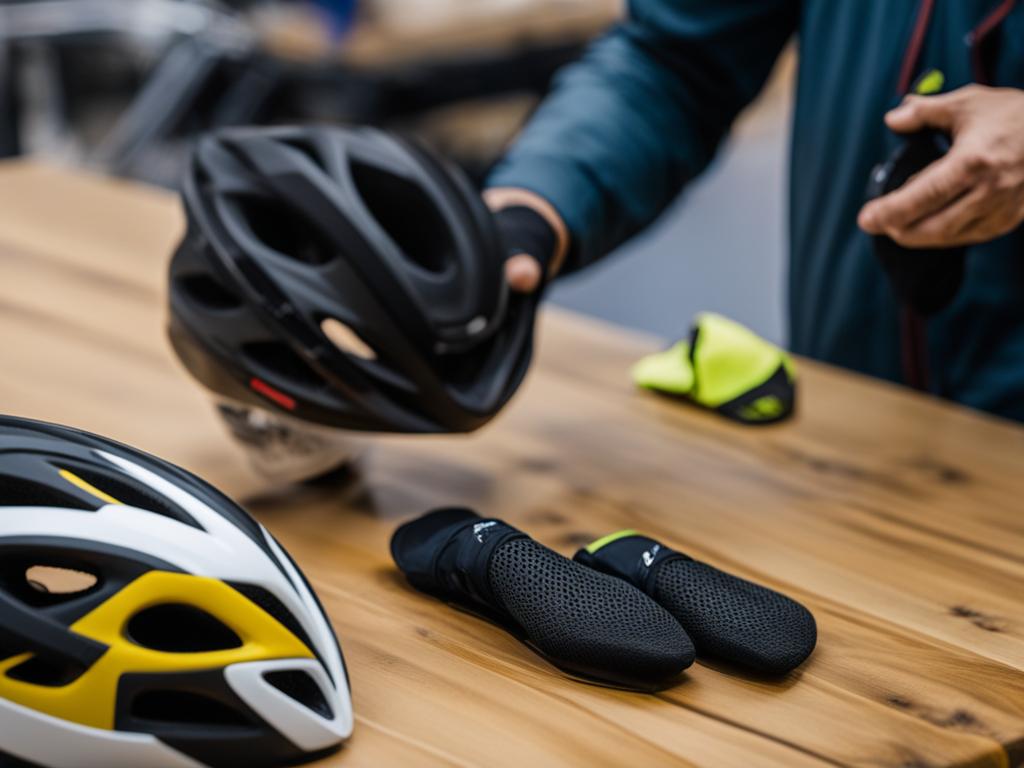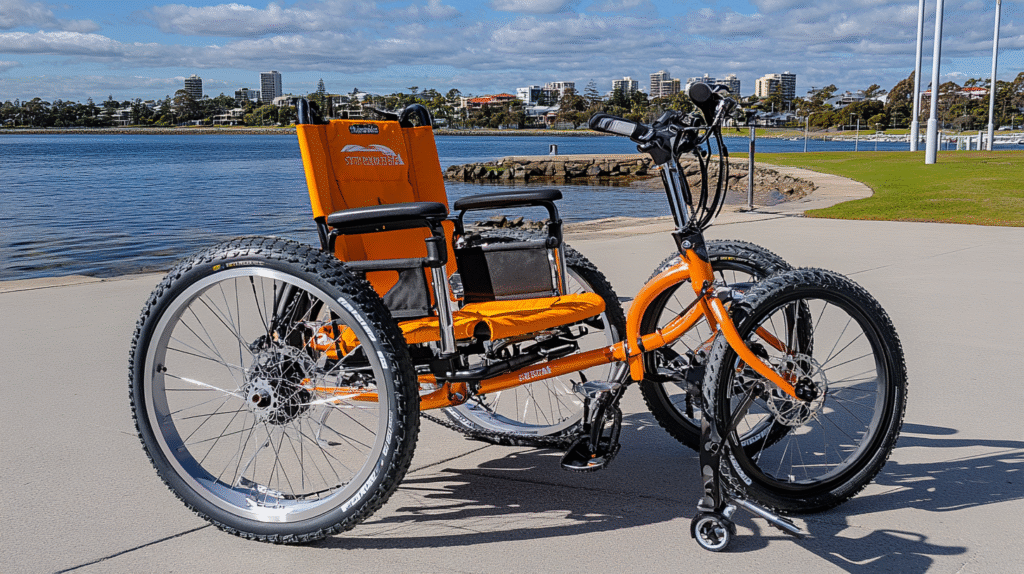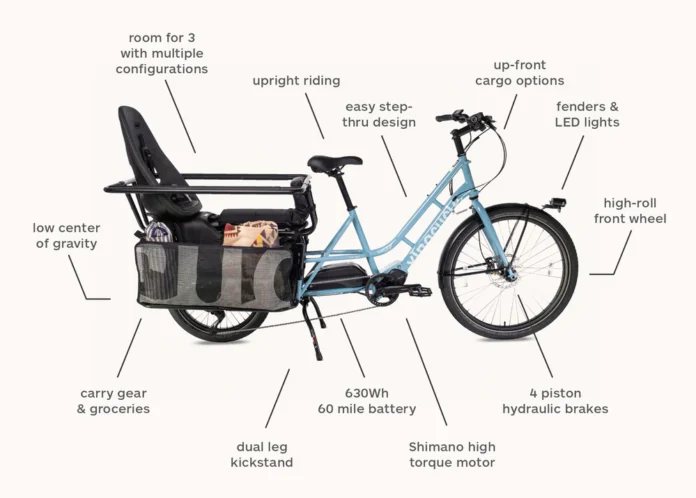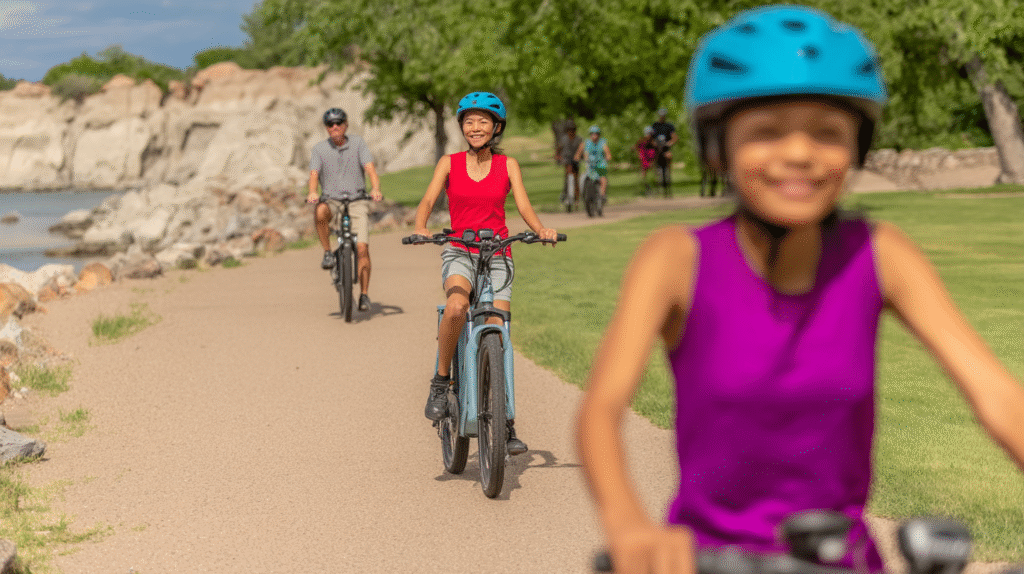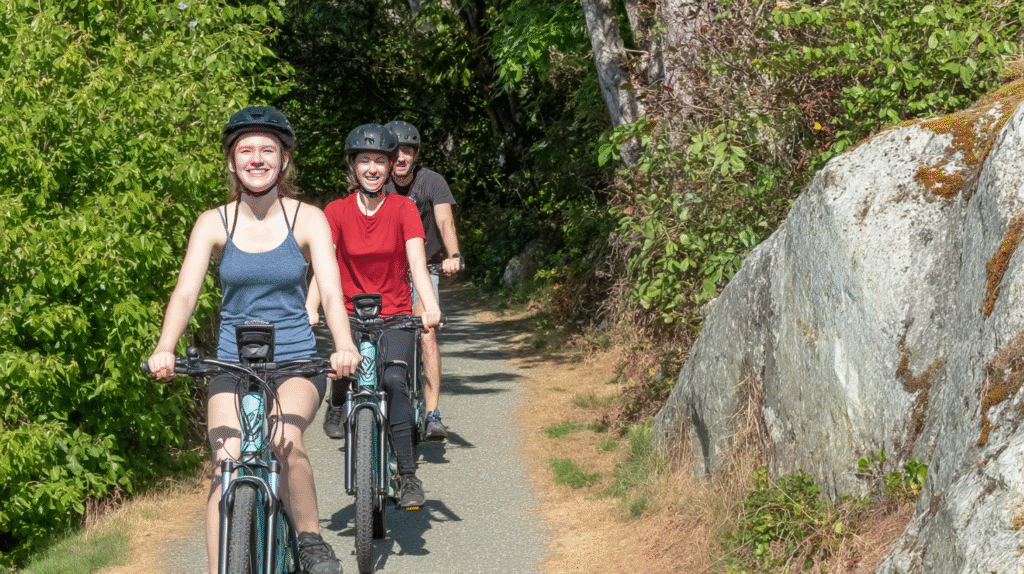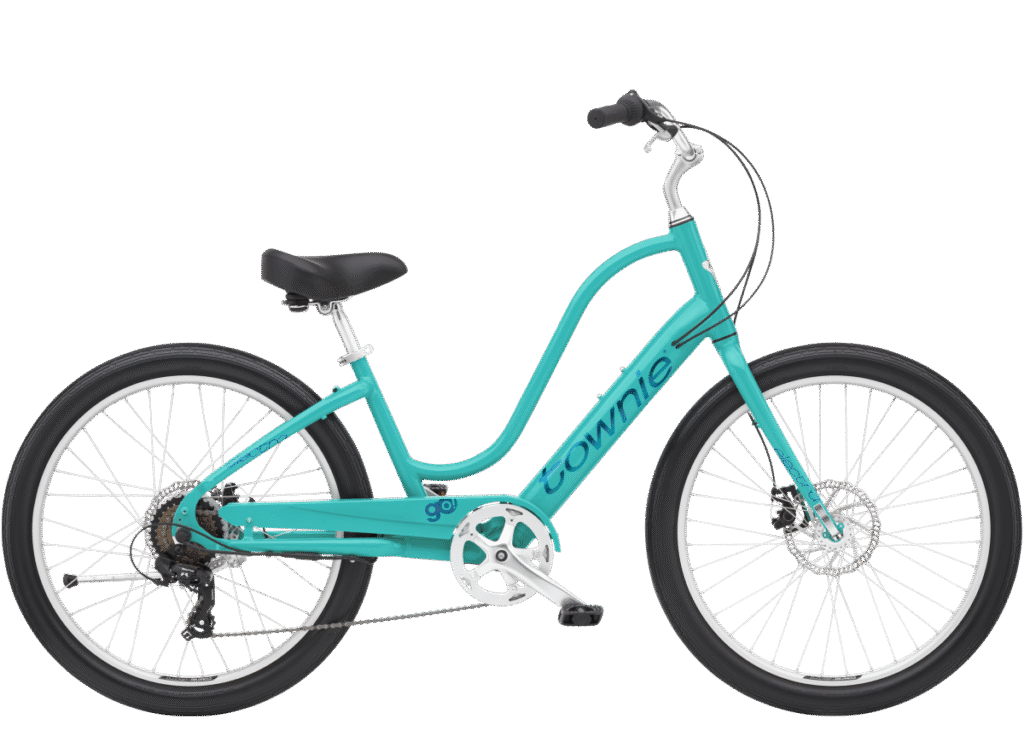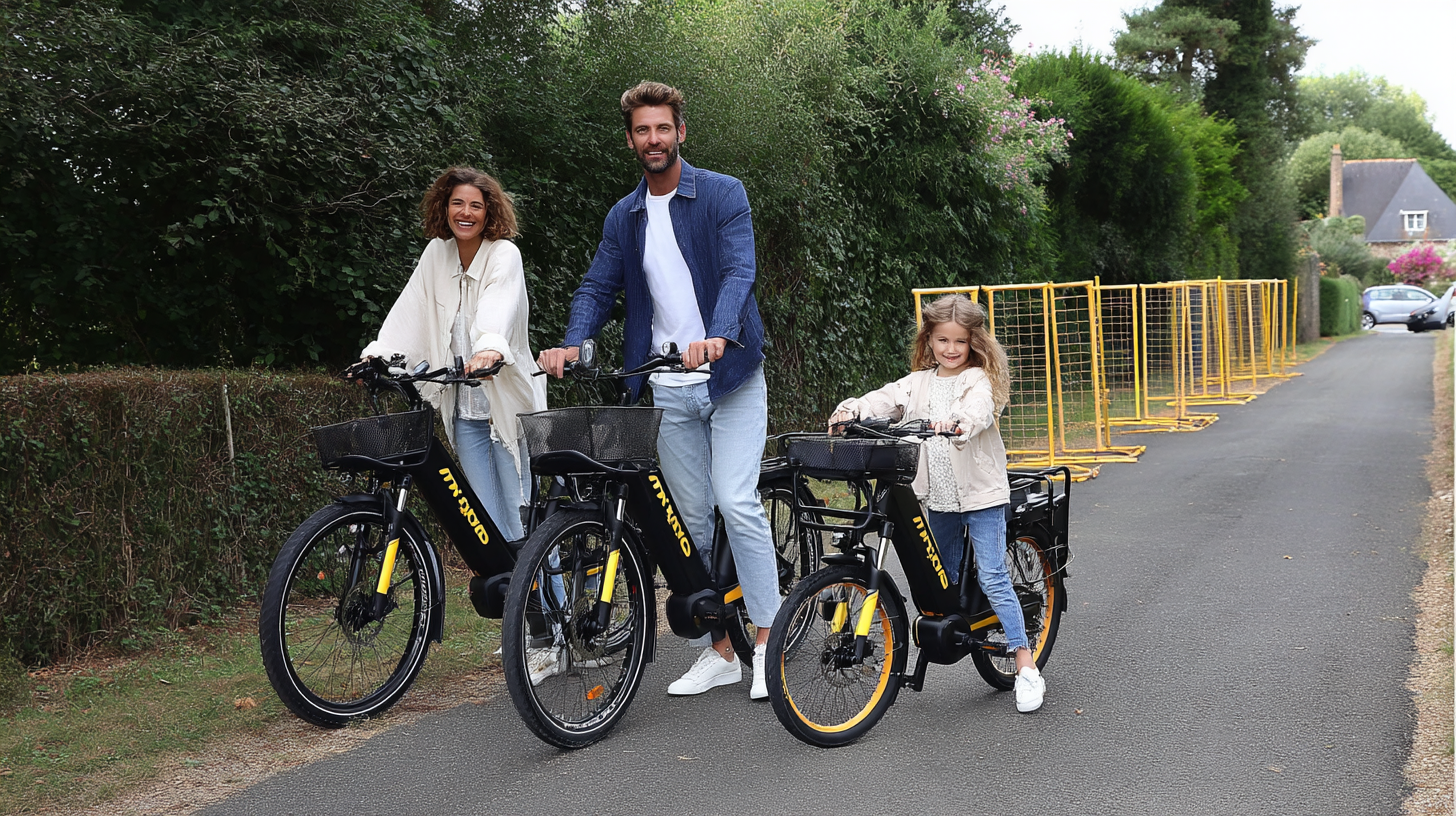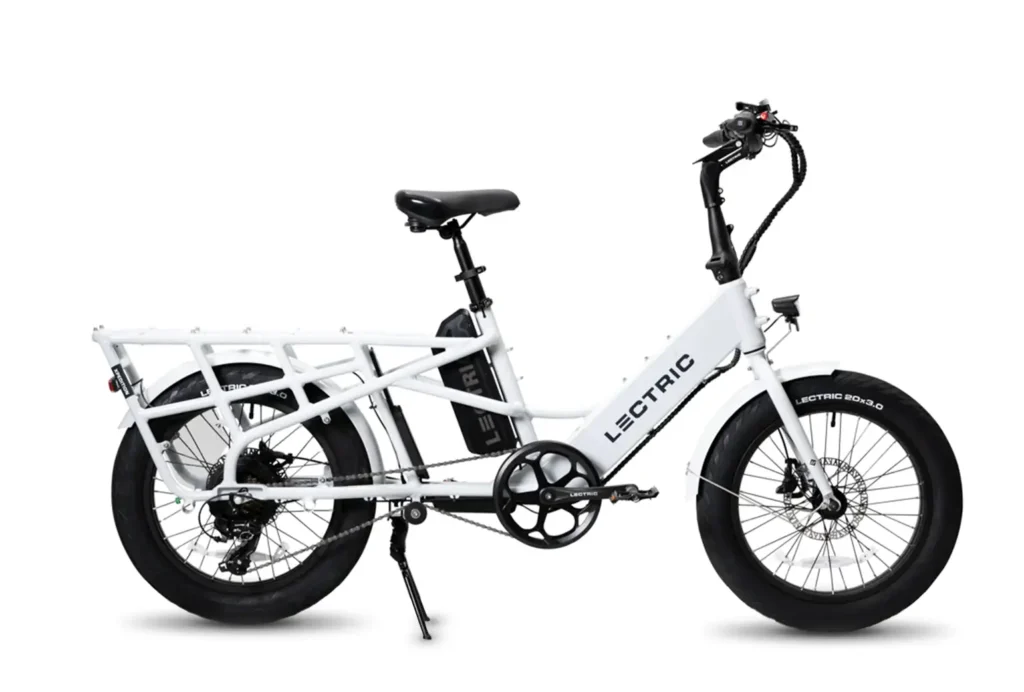Did you know that the average university student spends over 28 hours per month just traveling between classes? That’s nearly a full credit course worth of time lost to campus commuting each semester! As parking spaces become scarcer and class schedules tighter, a transportation revolution is quietly transforming American campuses. Discover the best e-bikes for college students.
Your daily commute shapes your entire academic experience. Some students endure lengthy bus rides, others circle parking lots desperately seeking spaces, while many trudge across sprawling campuses on foot. But what if there was a more efficient and enjoyable way to navigate your educational journey?
Electric bicycles are emerging as the perfect solution for campus mobility challenges. They combine the convenience of motorized transport with the flexibility to bypass traffic jams and parking headaches. Modern campus transportation options from retailers like ebikesus.com are specifically designed with student needs in mind.
The rising popularity of electric transportation on American campuses isn’t just a trend—it’s a practical response to real problems. These vehicles offer the perfect balance between speed and maneuverability, allowing you to zip from dormitories to lecture halls without breaking a sweat or your budget.
Table of Contents
Key Takeaways for e-bikes for College Students
- Students spend approximately 28 hours monthly on campus commuting
- Electric bicycles eliminate parking challenges common with traditional vehicles
- Campus e-bike transportation offers faster travel times between classes
- Electric bicycles provide eco-friendly alternatives to cars and buses
- Modern e-bikes are specifically designed to meet student transportation needs
- Initial investment in an electric bicycle typically pays off within one semester
Why E-bikes are a Game-Changer for University Life
University campuses are getting bigger, and students have busier lives. E-bikes are a smart choice for moving around easily and saving money. They help students avoid the hassle of finding parking and balance their tight budgets.
Many American campuses are perfect for e-bikes because of their size and varied terrain. Stores like ebikesus.com now sell e-bikes made for students. These bikes are durable, affordable, and have features that make campus life better.
Let’s see why e-bikes are the top choice for smart college students.
Saving Money: Cutting Transport and Parking Costs
Going to college costs more than just tuition and books. Transportation expenses can add up quickly. E-bikes offer a cheaper way to get around, saving you hundreds or thousands of dollars a year.
Here are some big savings from using an e-bike:
- Save on parking permits, which cost $300-$800 a year
- Don’t spend $50-$100 a month on public transport
- Save $150-$200 a month on gas if you own a car
- Lower costs for car maintenance like oil changes and repairs
Buying a good e-bike usually pays off in one year. For students watching their budget, e-bikes are a great choice.
Beating the Clock: Quicker Commutes and More Study Time
Time is precious for college students. E-bikes make getting around campus faster. They keep a steady speed, even up hills or against the wind.
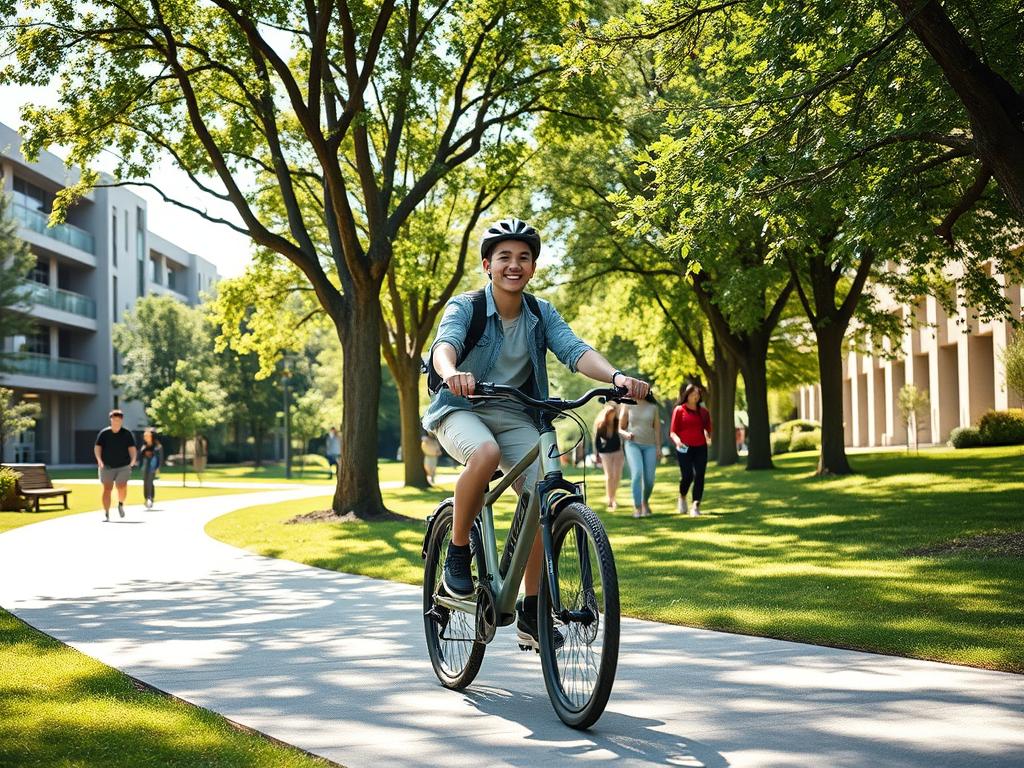
A trip across campus that takes 20 minutes walking can be just 5-7 minutes on an e-bike. This means more time for studying, hanging out, or sleeping in.
- Wake up later and still make it to class on time
- Attend classes in different buildings without trouble
- Avoid traffic jams during busy hours
- Have more time to study or relax
Many students say e-bikes give them 5-10 hours back each week. This extra time is great for studying, socializing, or resting.
Eco-Friendly Travel: Reducing Your Carbon Footprint on Campus
Today’s students care about the environment, and e-bikes are a green choice. They’re better than cars or public transport for the planet.
E-bikes have big environmental benefits:
- They don’t emit any pollution while you ride
- They have a small carbon footprint, even when you consider battery production and charging
- They help reduce traffic and pollution on campus
- They save green spaces by needing less parking
Many American universities support eco-friendly travel. They encourage students to use e-bikes and offer perks for doing so. This makes e-bikes even more appealing.
Fitness Boost: Integrating Exercise into Your Daily Routine Effortlessly
Some people think e-bikes don’t help you stay fit. But, they actually offer a great workout that fits into your day. Unlike regular bikes, e-bikes let you control how hard you work out.
The pedal-assist feature on most e-bikes lets you:
- Choose how hard to work out based on your energy and schedule
- Get fitter by using less assistance over time
- Burn 100-300 calories during a typical campus ride
- Stay active without needing to go to the gym
Studies show e-bike riders cycle more and for longer than regular cyclists. This means more exercise for students, even when they’re busy.
“E-bikes have changed how our students get around campus. We’ve seen more cycling, less parking demand, and students are happier with their commute. It’s good for students, the university, and the planet.”
E-bikes offer savings, speed, green benefits, and fitness. They’re a great solution for college students’ transportation needs. As more students look for green ways to get around, e-bikes are becoming a key part of university life.
Choosing Your Ideal Student E-bike: Features and Budget
Finding the right e-bike for college is key. It should have features that fit your needs and be affordable. This choice can change your daily campus life for the better.
Key E-bike Features for Student Needs
When picking an e-bike, think about your campus commute and personal needs. The right bike can make a big difference.
Motor power is important, especially for campus terrain. A 500W motor is great for flat areas and light hills. But, if your campus has steep hills or you like long rides, a 750W motor is better.
Battery range is crucial for daily use. Look for e-bikes with 30-50 miles per charge. This range covers most campus trips and weekend fun.
Comfort is also key. Look for adjustable seats, ergonomic handlebars, and suspension. Many portable e-bikes for students have shock-absorbing seats for a smoother ride.
Frame design matters for comfort and practicality. Low-step frames are easy to get on and off. Aluminum frames are strong and light, while steel frames are durable but heavier.
“My foldable e-bike completely changed my college experience. I can store it in my dorm room, take it on the bus when needed, and never worry about being late to class again. The investment paid for itself within one semester of not paying for campus parking.”
Balancing Quality and Affordability: Finding a Budget-Friendly Ride
E-bikes vary in price, but students need to find a balance. Entry-level bikes start at $800-1,200, offering basic features for campus use.
Mid-range bikes ($1,200-2,000) have better batteries, motors, and components. They last longer, making them a good value. Premium bikes ($2,000+) offer top performance but are pricier.
Consider the total cost of ownership, not just the price. A more expensive bike with better battery tech may save money in the long run. Look for student discounts or payment plans to make quality e-bikes more affordable.
New vs. Second-Hand E-bikes: Pros and Cons for Students
Choosing between new and used e-bikes is important for students on a budget.
| Aspect | New E-bikes | Second-Hand E-bikes |
|---|---|---|
| Cost | Higher initial investment | Lower purchase price (30-50% savings) |
| Warranty | Full manufacturer coverage | Limited or no warranty protection |
| Battery Life | 100% capacity | Reduced capacity based on previous use |
| Technology | Latest features and standards | Potentially outdated technology |
| Reliability | Predictable performance | Depends on previous maintenance |
When buying used, check the battery health. Ask for charging history and total mileage. Test the range and have a bike shop inspect it if you can.
Be cautious of red flags like sellers not showing the bike’s functions, unusual noises, battery damage, or worn parts. Many bike shops offer free assessments for second-hand bikes.
Understanding E-bike Types: Commuter
Commuter e-bikes are popular among students. They have upright riding positions and practical accessories for daily use.
Commuter e-bikes are reliable and comfortable. They’re perfect for campus environments. They don’t focus on speed or off-road use.
Dorm-friendly electric bikes are great for on-campus students. They fold up for easy storage, reducing theft risk. These bikes have 20″ wheels, making them compact but less efficient for long trips.
Step-through frames are great for students with mobility challenges. They make getting on and off the bike easier, especially in winter with bulky clothes or heavy backpacks.
- Hybrid e-bikes blend road and mountain bike features for versatility.
- Cargo e-bikes carry extra stuff like groceries or laundry.
- Road-oriented e-bikes are fast for longer commutes.
- Fat tire e-bikes handle snow and rough terrain for all-weather access.
Your choice depends on your campus, housing, and personal preferences. Many students prefer portable e-bikes with folding capabilities for their flexibility. They may not be as fast as full-sized bikes but are great for changing semesters and living situations.
Navigating Campus and City on Your E-bike
Getting an e-bike for college is more than just buying one. You need to know how to use it wisely on campus and in the city. With the right tips, your e-bike can make your daily rides fun and efficient. It can also help you avoid common mistakes that new riders make.
Learning Local and Campus E-bike Rules and Etiquette
Before you start riding, learn about your campus’s e-bike rules. Many American universities have special rules for e-bikes as smart mobility solutions for campuses grow in popularity.
Most campuses limit e-bike speeds to 15-20 mph on shared paths. This is to keep pedestrians safe. Always follow these speed limits, especially during busy times when paths are crowded.
“The key to being a good campus citizen is riding at the speed of respect. Just because your e-bike can go faster doesn’t mean it should in shared spaces.”
Wearing a helmet is always a good idea, even if it’s not required by law. Some campuses also ask you to register your e-bike. This helps if it gets stolen and helps the school manage bike use better.
When riding on campus, always yield to pedestrians, use hand signals, and don’t ride on sidewalks unless it’s okay. How you ride affects how others see e-bike riders on campus.
Finding the Best Routes: Cycle Paths and Low-Traffic Streets
The shortest path isn’t always the safest or most fun. Use apps like Strava or Google Maps’ bike feature to find bike-friendly routes. These routes avoid busy streets and dangerous spots.

Your campus transportation office can give you the best route info. Many universities have maps that show the best paths for e-bikes, bike lanes, and quiet streets.
Join local cycling groups on campus or online. Experienced riders can share tips on routes that official maps might not show. They can tell you about shortcuts, bad intersections, and seasonal tips.
For longer trips into the city, look for paths that connect campus to city bike lanes. Many cities have made cycling safer and more fun with new bike paths.
Parking Your E-bike Securely and Conveniently on Campus
Finding a safe place to park your e-bike is key. Look for special e-bike parking spots, which are becoming common at smart campuses. These spots often have charging stations and extra security.
If there’s no special parking, try bike racks near building entrances. Park in places that are well-lit, visible, and have cameras to reduce theft. Some buildings even offer indoor storage for e-bikes.
For those who don’t want to buy an e-bike, student electric bike rentals are becoming popular. These programs, often run by the university, let you enjoy e-bike benefits without the cost or storage worries.
When using shared racks, park your e-bike in a way that saves space and keeps it secure. This helps more riders and stops others from messing with your bike.
Dealing with Hills and Longer Distances with Ease
E-bikes are great for tackling tough terrain. When going up hills, use a lower gear before starting. This helps the motor and saves battery.
For long rides, use different power levels wisely. Use high power for hills and headwinds, then switch to lower power or no power on flat parts. This helps you go further.
Weather affects your e-bike’s battery. In cold weather, your range might drop by 20-30%. Charge more often in winter or carry a charger for quick top-ups.
If your campus is big or you need to travel far, use your e-bike’s trip planning tools. Models from places like ebikesus.com often have range calculators that consider terrain and how you ride.
E-bikes make long distances easy without getting you sweaty or tired. This is great for getting to classes on time or quickly getting back to your dorm.
Essential Maintenance for a Smooth-Running Student E-bike
Keeping your e-bike in good shape is key for a smooth campus ride. For college students, a reliable e-bike is crucial for managing time and money. Luckily, you don’t need to be a mechanic to keep your battery-powered bike for campus running well.
Quick Pre-Ride Checks
Develop a 60-second pre-ride check to avoid common issues. This quick routine should be as easy as grabbing your backpack.
First, check your tires. The right pressure is key for efficiency and safety. Most e-bikes show the recommended PSI on the sidewall. Underinflated tires drag you down, while overinflated ones are harsh and slippery.
Next, test your brakes. They should work before the lever touches the handlebar. If they feel soft or make odd noises, it’s time for a fix.
Lastly, check your battery level. Most e-bikes have LED lights showing charge. Always have enough power for your trip, especially if charging spots are scarce.
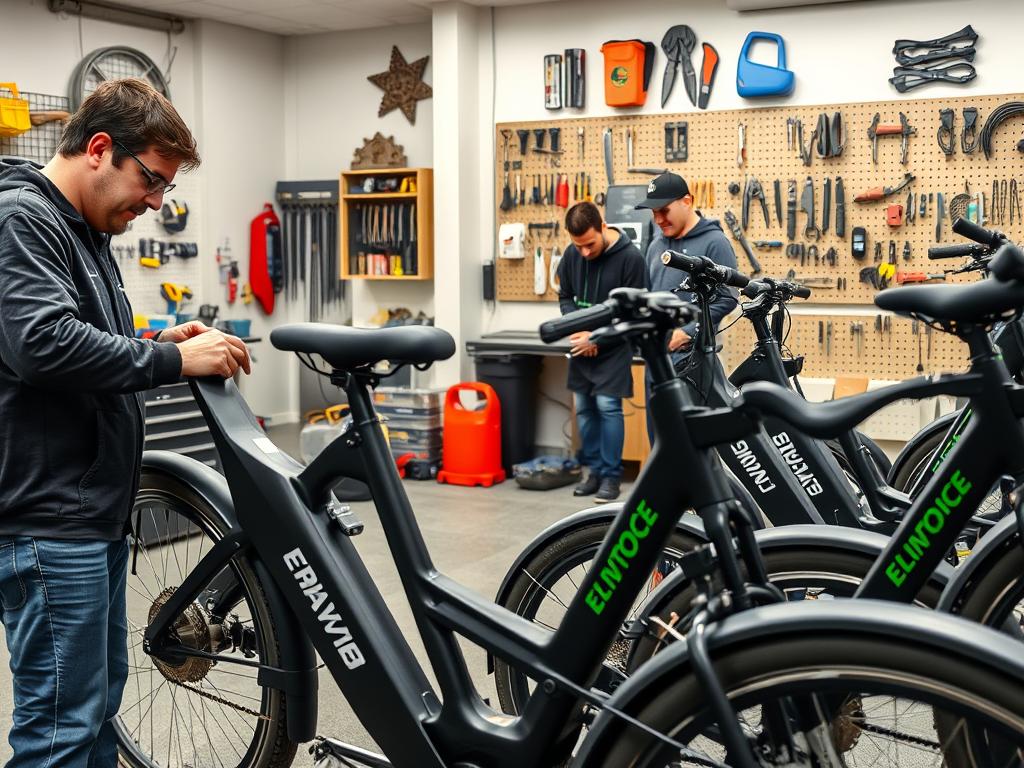
Basic Cleaning and Lubrication for Longevity
You can do basic maintenance on folding e-bikes for student living even in small spaces. Their compact design is perfect for tight spots.
Keep a small kit with microfiber cloths, degreaser, chain lubricant, and a soft brush. Clean your bike after riding in the rain to prevent rust. Pay extra attention to the chain and gears, where dirt builds up fast.
For deeper cleaning, use degreaser on your chain, then wipe and lubricate. This keeps your bike running smoothly. Choose the right lubricant for your area—dry for dusty places, wet for rainy ones.
For folding e-bikes, check and tighten the folding parts often. These parts can loosen with use, especially when folding and storing your bike.
Battery Care: Charging Tips and Extending Battery Life
The battery is the heart of your rechargeable mobility solution. Taking care of it can make it last longer and perform better throughout college.
Avoid letting your battery fully drain before charging. Lithium-ion batteries prefer partial discharge. Charging to 80-90% daily can help your battery last longer.
Keep your battery away from extreme temperatures. Heat can damage it, so park in the shade when it’s hot. In cold weather, bring the battery inside to keep it from freezing.
During breaks, store your battery at 40-60% charge in a cool, dry place. Never charge it fully or let it go completely empty. This helps prevent capacity loss when not in use.
| Battery Care Task | Frequency | Benefit | Warning Signs |
|---|---|---|---|
| Partial charging (80-90%) | Daily | Extended battery lifespan | Decreased range |
| Clean battery contacts | Monthly | Reliable connection | Intermittent power |
| Check for physical damage | Weekly | Safety assurance | Cracks or swelling |
| Storage preparation | Before breaks | Prevents capacity loss | Difficulty holding charge |
Knowing When to Visit a Bike Shop for Professional Servicing
While DIY maintenance is great, some issues need a pro. Websites like ebikesus.com can help you know when to seek expert help for your campus e-bike.
Get professional service for unusual motor noises, big range drops, or electrical problems. These signs often mean you need more than basic care.
Most makers suggest a full check-up every 500-1,000 miles or at least once a semester. This includes motor checks, brake inspections, and drivetrain adjustments. These tasks need special tools and skills.
For battery-powered bikes for campuses, getting a pro to check your bike before and after storage is crucial. They can check your battery and make sure everything works right after it’s been still for a while.
Preventive maintenance is cheaper than fixing things later. Find a local bike shop that knows e-bikes and offers student discounts. They might have special deals for college riders.
E-bike Security: Protecting Your Ride on and off Campus
Campus areas are often hotspots for bike theft. This makes it key to have strong security for e-bikes. As you use your e-bike for eco-friendly travel, keeping it safe is vital. E-bikes are pricey, making them a target for thieves on college grounds.

Proper security steps help you enjoy your e-bike’s benefits through college. Let’s look at the main ways to keep your e-bike safe on and off campus.
Investing in High-Quality Locks
Your lock is your first defense against theft. Never settle for a cheap lock to save money. Spending more on a good lock can save you a lot in the long run.
U-locks are the best choice for security. They resist cutting, leverage, and picking. Experts suggest spending about 10% of your e-bike’s value on security.
For extra protection, use a dual-lock system:
- Primary lock: A heavy-duty U-lock to secure the frame and rear wheel to something solid
- Secondary lock: A chain or folding lock for the front wheel
- Look for locks with Sold Secure Gold or ART ratings
- Consider locks with alarm features for extra deterrence
Stores like ebikesus.com may offer deals on locks with e-bike purchases. This can save you money while ensuring you get the right security.
Proper Locking Techniques to Deter Thieves
Even the best lock won’t work if you don’t use it right. Proper locking is as important as the lock itself. Always lock your e-bike to a fixed, solid object that can’t be easily cut or moved.
Here are key locking practices:
- Position your lock so the keyhole faces downward (making it harder to tamper with)
- Ensure the lock goes through your frame and rear wheel, then attach to the rack
- Fill as much of the U-lock’s interior space as possible to prevent leverage attacks
- Use your secondary lock for the front wheel and any quick-release components
Location is key when parking your e-bike. Choose well-lit, busy areas with security cameras. Many campuses have secure bike parking spots—use them, even if they’re a bit far.
Battery Security and Removable Components
Your e-bike’s battery is very expensive and attractive to thieves. Most e-bikes have removable batteries, which is good for charging and security.
Always take your battery with you when parking for a long time, especially at night. This keeps your battery safe and makes your e-bike less appealing to thieves.
Other parts to remove include:
- Display units and control panels
- Lights (if detachable)
- Quick-release seats or seat posts
- Accessories like panniers, bags, or bike computers
Newer e-bikes in the USA may have built-in security like GPS tracking. While they cost more, they offer peace of mind and help recover your bike if it’s stolen.
Considering E-bike Registration and Insurance Options
Physical security is important, but you should also have administrative protections. Start by registering your e-bike with your campus security. Many universities keep databases of student bikes to help recover them if stolen.
Consider these options too:
- National bike registries like Bike Index or Project 529
- Marking your e-bike with a unique identifier
- Taking clear photos of your e-bike and recording the serial number
Insurance adds a final layer of protection. Many renters’ insurance policies cover e-bikes for a small extra fee. You can also get specialized e-bike insurance from several providers, designed for students.
When looking at insurance, make sure it covers:
- Theft on and off campus
- Damage from accidents
- Battery coverage (often not included in standard policies)
- Liability protection if you hurt someone while riding
By taking these steps, you’re not just protecting your e-bike. You’re also protecting your investment in sustainable living and eco-friendly travel. The effort to secure your e-bike is worth it for peace of mind and continued use of a practical college transportation solution.
The Financial Perks: Long-Term Savings with an E-bike
E-bikes offer college students great financial benefits. They are not just convenient and good for the environment. They also save money over time. Let’s explore how much you can save and why e-bikes are a smart choice for students on a budget.
Calculating Savings: E-bike vs. Public Transport Costs
Public transport costs can add up quickly. Monthly passes in big college towns cost between $50 and $120. This means you spend $600 to $1,440 a year. Even with student discounts, it’s still a lot of money.
E-bikes offer more flexibility. You don’t have to wait for buses or trains. Most students save money on e-bikes within 12-18 months compared to public transport.
| Transportation Method | Initial Cost | Monthly Expenses | Annual Total | 4-Year College Total |
|---|---|---|---|---|
| E-bike (Mid-range) | $800-$1,500 | $5 (electricity) | $860-$1,560 | $1,040-$1,740 |
| Public Transport | $0 | $70-$120 | $840-$1,440 | $3,360-$5,760 |
| Car (Economy) | $3,000-$8,000 | $250-$400 | $6,000-$12,800 | $15,000-$27,200 |
| Rideshare Services | $0 | $150-$300 | $1,800-$3,600 | $7,200-$14,400 |
The table shows that eco-friendly commuting options like e-bikes save a lot of money in college. Even with occasional maintenance, you can save $2,000 to $4,000 compared to public transport.
No More Fuel Expenses or Expensive Car Maintenance
Car ownership in college is expensive. Insurance, parking, maintenance, and fuel can cost $3,000 to $5,000 a year. E-bikes eliminate these costs.
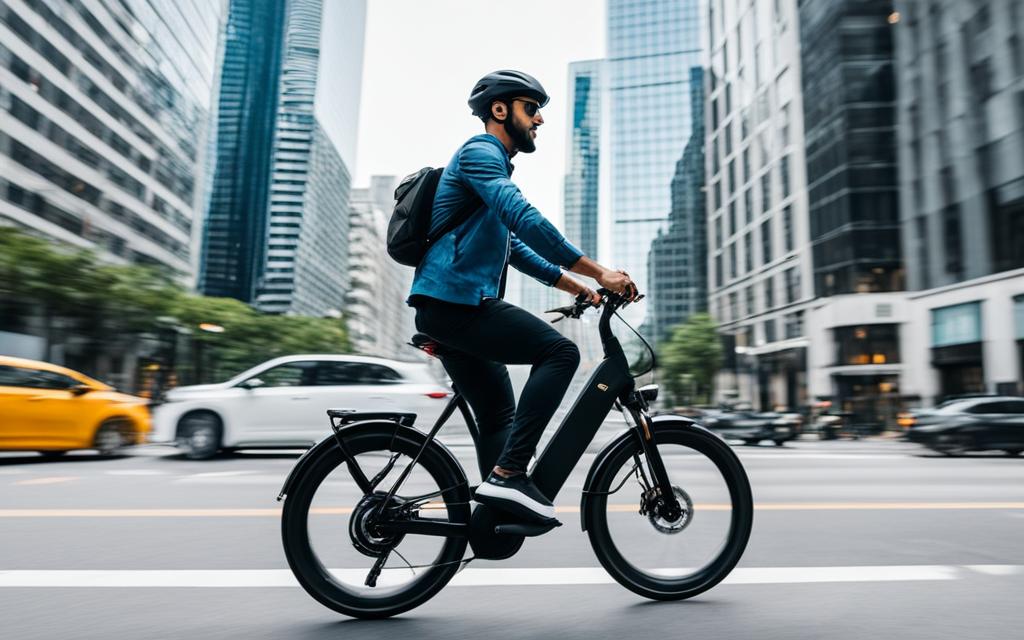
Charging an e-bike costs just 10-15 cents per charge. Most batteries last 30-60 miles. This means energy costs of $5-$8 a month for daily commuting.
E-bike maintenance is also cheap. Annual tune-ups cost $50-$100. Occasional tire or brake replacements add little extra cost. This is much less than car repairs.
Potential Resale Value of Your E-bike After Graduation
E-bikes keep their value better than cars. A quality e-bike can sell for 40-60% of its original price after 2-4 years. This is the typical college time frame.
Brands like those on ebikesus.com tend to hold their value well. For example, a $1,200 commuter e-bike might sell for $600-$700 after graduation. This reduces your total transportation costs to just a few hundred dollars a year.
This resale potential makes fitness integration through e-bike commuting a smart financial move. By choosing a durable model with a strong market presence, you’re essentially “borrowing” the bike at a fraction of its cost.
Avoiding Unexpected Fines by Knowing Local E-bike Laws
One financial benefit of e-bike ownership is avoiding costly fines. But, you need to know the local laws.
E-bike laws vary a lot. Most places classify e-bikes into three categories based on their speed and whether they have a throttle:
- Class 1: Pedal-assist only (no throttle), with assistance stopping at 20 mph
- Class 2: Throttle-assisted up to 20 mph
- Class 3: Pedal-assist only, with assistance stopping at 28 mph
Knowing which class your e-bike is and where it’s allowed can save you from fines. For example, some campuses allow Class 1 e-bikes on all bike paths but restrict Class 2 and 3 models to roadways only.
Also, knowing helmet rules, parking regulations, and registration rules can prevent costly violations. In some cities, improperly parked e-bikes can be impounded with fees over $100. This is an unnecessary expense you can avoid with the right knowledge.
E-bikes offer more than just financial savings. They also improve your health, reduce stress, and may even help you do better in school. These benefits, while harder to measure, add a lot of value to owning an e-bike in college.
E-bikes and Student Lifestyle: More Than Just a Commute
E-bikes do more than just get you from one place to another. They open up new ways to explore, meet people, and handle daily tasks. They fit right into campus life, making your college years better than usual. With e-bikes from sites like ebikesus.com, American students find they’re great for both school and social life.
Increased Freedom and Independence to Explore
An e-bike lets you go further than ever before. Now, that cool apartment off-campus is within reach, saving you money on dorms.
Jobs that seemed too far away are now easy to get to. Your career growth isn’t held back by where you live, giving you a leg up in your job search.
Weekends are for fun too. Parks, shops, and cultural spots that were too far to walk or bus to are now a quick ride away. This freedom makes college better without the car costs and hassle.
Arriving to Lectures Fresh and Alert
E-bikes are great because they let you arrive feeling fresh. Regular biking can make you sweaty and tired, especially in warm weather or on hills.
With an e-bike, you can choose how hard to work. Need to look good for a big presentation? Just use more pedal assist and arrive cool and calm. This lets you focus on your studies, not how you look.
Starting your day right is key. No parking worries, no crowded buses, no traffic jams. This makes you more alert and ready to learn in the morning.
Carrying Your Gear: Options for Bags
College means carrying a lot of stuff around. Books, laptops, gym clothes, and more can be a real burden. Luckily, e-bikes have many ways to carry your stuff.
Pannier bags attach to the back of your e-bike, keeping your back dry and your hands free. They’re waterproof and have lots of room for your stuff.
For more flexibility, try a cycling backpack. They have comfy straps, are safe at night, and keep your things organized. Some even have special pockets for laptops.
“My Veefa adult electric bike completely changed my college experience. I can carry a week’s worth of groceries home without breaking a sweat, and I’ve discovered parts of the city I never would have seen otherwise.”
For big loads, add a front basket or a bigger rear rack. Your e-bike can become a mini truck for carrying big items or buying lots of books.
Joining University Cycling Clubs and Social Rides
E-bikes help you meet people through cycling clubs and group rides. Many schools have groups for e-bike riders, offering a community of like-minded students.
These groups plan rides to cool spots, trails, and scenic areas. With an e-bike, you can keep up with others while enjoying the ride. It’s a great way to make friends outside class.
Being a student often gets you special deals. Universities work with bike shops to offer student discounts on e-bikes and accessories. This makes owning an e-bike even more affordable.
Some schools also offer classes on bike maintenance and safety. By joining these groups, you’ll not only have more fun but also learn to keep your e-bike in great shape.
Comparing E-bikes with Other Student Transport Options
When picking a way to get around campus, it’s smart to compare e-bikes with other choices. Electric bicycles on campus have special benefits that might make them the best choice for you.
E-bike vs. Traditional Bicycle: Effort and Speed
E-bikes can cut your travel time by 30-50% compared to regular bikes. Models like the Macfox X1S have 500W of power, so you’ll get to your destination quicker and without getting tired. You still get to exercise by pedaling, but hills and headwinds won’t slow you down.
E-bike vs. Walking: Time and Distance Covered
A 20-minute walk across campus can turn into a 5-minute ride on an e-bike. The Merax 26″ Electric MTB can take you up to 28-35 miles, letting you live farther away while keeping costs low.
E-bike vs. Public Transport: Flexibility and Reliability
E-bikes offer door-to-door service whenever you want, unlike buses or trains with fixed times. No more waiting at stops or missing your ride. The Ancheer 26″ Electric MTB is an affordable option that’s always ready for you.
E-bike vs. Car: Cost
Cars cost thousands in payments, insurance, gas, maintenance, and parking fees. An e-bike from ebikesus.com is much cheaper upfront and has low ongoing costs. As green alternatives, e-bikes save on fuel and offer similar convenience for campus needs.
FAQ
Q: How much money can I actually save by using an e-bike instead of a car on campus?
A: Switching from a car to an e-bike can save college students
FAQ
Q: How much money can I actually save by using an e-bike instead of a car on campus?
A: Switching from a car to an e-bike can save college students $1,500-$3,000 a year. This includes savings on parking permits, gas, car insurance, and maintenance. Even compared to public transport, students can save $500-$1,500 annually, depending on their location and usage.
Q: What’s the ideal battery range for a campus e-bike?
A: An e-bike with a 30-50 mile range is perfect for most college students. It offers enough power for daily campus commuting and weekend trips. If your campus is hilly or you live far from campus, choose a model with a 50-mile range to avoid frequent recharging.
Q: Are e-bikes allowed on all college campuses?
A: Most American universities allow e-bikes, but rules vary. Many campuses limit speeds and require registration. Some classify e-bikes based on speed and throttle assistance. Always check your campus’s policies before buying.
Q: How do I secure my e-bike on campus to prevent theft?
A: Use high-quality U-locks or heavy-duty chain locks ($70-$150) to secure your e-bike. Lock both the frame and wheels to an immovable object. Remove the battery and any detachable parts when parking for a long time. Register your e-bike with campus security. Some universities offer secure bike storage for e-bikes.
Q: What’s the best e-bike type for a student living in a dorm?
A: Folding e-bikes are great for dorms because they can be collapsed for small spaces. Look for models under 40 pounds with quick-folding mechanisms. If you prefer a non-folding model, choose a lightweight commuter e-bike with a removable battery. Check if your dorm offers secure bike storage rooms.
Q: How much maintenance does an e-bike require during the school year?
A: E-bikes need minimal but regular maintenance. Check tire pressure, brakes, and battery level before each ride. Clean your bike monthly with basic supplies. Charge batteries to 80-90% for daily use. Get professional servicing once a semester for maintenance.
Q: Can I use my e-bike in winter on campus?
A: Yes, but take precautions. Reduce tire pressure for better traction and use fenders to prevent slush spray. Protect your battery from extreme cold. Store your e-bike indoors when possible. Consider studded tires for icy conditions. Many campuses improve winter path maintenance for e-bikes.
Q: Is it worth buying a new e-bike or should I look for a used one?
A: New e-bikes offer warranty protection, the latest technology, and maximum battery life. They cost $1,000-$3,000 for quality models. Used e-bikes save 30-50% but carry risks of hidden damage and battery degradation. A mid-range new e-bike offers reliability and value for most students.
Q: How much physical exercise do I actually get with an e-bike?
A: E-bike riders burn 300-400 calories per hour during pedal-assisted riding. This is less than traditional bikes but more frequent and longer rides. Most e-bikes allow adjustable assistance levels. Studies show e-bike commuters achieve 80% of traditional cycling’s cardiovascular benefits with less strain.
Q: What’s the learning curve for riding an e-bike?
A: Most students master e-bike basics in 1-2 rides. The main adjustment is getting used to the power assistance. Practice in empty parking lots before busy campus paths. Start with the lowest assistance level and increase as you gain confidence. Remember, e-bikes require slightly more braking distance than traditional bikes.
Q: Are there student discounts available for e-bikes?
A: Yes, many manufacturers and retailers offer student discounts of 5-15% off with a valid student ID. Some universities have negotiated special pricing or offer subsidies through sustainability programs. Campus bike shops and cities may also offer student-exclusive deals and rebates.
Q: How do I transport my e-bike home during breaks?
A: For short distances, many bus lines and train services accommodate e-bikes, though policies vary. For longer trips, consider bike shipping services ($50-$150) or specialized e-bike carriers for cars ($150-$300). If flying, note that most airlines prohibit lithium batteries over 160Wh. Some universities offer break storage for e-bikes, which is often the most convenient option.
,500-,000 a year. This includes savings on parking permits, gas, car insurance, and maintenance. Even compared to public transport, students can save 0-
FAQ
Q: How much money can I actually save by using an e-bike instead of a car on campus?
A: Switching from a car to an e-bike can save college students $1,500-$3,000 a year. This includes savings on parking permits, gas, car insurance, and maintenance. Even compared to public transport, students can save $500-$1,500 annually, depending on their location and usage.
Q: What’s the ideal battery range for a campus e-bike?
A: An e-bike with a 30-50 mile range is perfect for most college students. It offers enough power for daily campus commuting and weekend trips. If your campus is hilly or you live far from campus, choose a model with a 50-mile range to avoid frequent recharging.
Q: Are e-bikes allowed on all college campuses?
A: Most American universities allow e-bikes, but rules vary. Many campuses limit speeds and require registration. Some classify e-bikes based on speed and throttle assistance. Always check your campus’s policies before buying.
Q: How do I secure my e-bike on campus to prevent theft?
A: Use high-quality U-locks or heavy-duty chain locks ($70-$150) to secure your e-bike. Lock both the frame and wheels to an immovable object. Remove the battery and any detachable parts when parking for a long time. Register your e-bike with campus security. Some universities offer secure bike storage for e-bikes.
Q: What’s the best e-bike type for a student living in a dorm?
A: Folding e-bikes are great for dorms because they can be collapsed for small spaces. Look for models under 40 pounds with quick-folding mechanisms. If you prefer a non-folding model, choose a lightweight commuter e-bike with a removable battery. Check if your dorm offers secure bike storage rooms.
Q: How much maintenance does an e-bike require during the school year?
A: E-bikes need minimal but regular maintenance. Check tire pressure, brakes, and battery level before each ride. Clean your bike monthly with basic supplies. Charge batteries to 80-90% for daily use. Get professional servicing once a semester for maintenance.
Q: Can I use my e-bike in winter on campus?
A: Yes, but take precautions. Reduce tire pressure for better traction and use fenders to prevent slush spray. Protect your battery from extreme cold. Store your e-bike indoors when possible. Consider studded tires for icy conditions. Many campuses improve winter path maintenance for e-bikes.
Q: Is it worth buying a new e-bike or should I look for a used one?
A: New e-bikes offer warranty protection, the latest technology, and maximum battery life. They cost $1,000-$3,000 for quality models. Used e-bikes save 30-50% but carry risks of hidden damage and battery degradation. A mid-range new e-bike offers reliability and value for most students.
Q: How much physical exercise do I actually get with an e-bike?
A: E-bike riders burn 300-400 calories per hour during pedal-assisted riding. This is less than traditional bikes but more frequent and longer rides. Most e-bikes allow adjustable assistance levels. Studies show e-bike commuters achieve 80% of traditional cycling’s cardiovascular benefits with less strain.
Q: What’s the learning curve for riding an e-bike?
A: Most students master e-bike basics in 1-2 rides. The main adjustment is getting used to the power assistance. Practice in empty parking lots before busy campus paths. Start with the lowest assistance level and increase as you gain confidence. Remember, e-bikes require slightly more braking distance than traditional bikes.
Q: Are there student discounts available for e-bikes?
A: Yes, many manufacturers and retailers offer student discounts of 5-15% off with a valid student ID. Some universities have negotiated special pricing or offer subsidies through sustainability programs. Campus bike shops and cities may also offer student-exclusive deals and rebates.
Q: How do I transport my e-bike home during breaks?
A: For short distances, many bus lines and train services accommodate e-bikes, though policies vary. For longer trips, consider bike shipping services ($50-$150) or specialized e-bike carriers for cars ($150-$300). If flying, note that most airlines prohibit lithium batteries over 160Wh. Some universities offer break storage for e-bikes, which is often the most convenient option.
,500 annually, depending on their location and usage.
Q: What’s the ideal battery range for a campus e-bike?
A: An e-bike with a 30-50 mile range is perfect for most college students. It offers enough power for daily campus commuting and weekend trips. If your campus is hilly or you live far from campus, choose a model with a 50-mile range to avoid frequent recharging.
Q: Are e-bikes allowed on all college campuses?
A: Most American universities allow e-bikes, but rules vary. Many campuses limit speeds and require registration. Some classify e-bikes based on speed and throttle assistance. Always check your campus’s policies before buying.
Q: How do I secure my e-bike on campus to prevent theft?
A: Use high-quality U-locks or heavy-duty chain locks (-0) to secure your e-bike. Lock both the frame and wheels to an immovable object. Remove the battery and any detachable parts when parking for a long time. Register your e-bike with campus security. Some universities offer secure bike storage for e-bikes.
Q: What’s the best e-bike type for a student living in a dorm?
A: Folding e-bikes are great for dorms because they can be collapsed for small spaces. Look for models under 40 pounds with quick-folding mechanisms. If you prefer a non-folding model, choose a lightweight commuter e-bike with a removable battery. Check if your dorm offers secure bike storage rooms.
Q: How much maintenance does an e-bike require during the school year?
A: E-bikes need minimal but regular maintenance. Check tire pressure, brakes, and battery level before each ride. Clean your bike monthly with basic supplies. Charge batteries to 80-90% for daily use. Get professional servicing once a semester for maintenance.
Q: Can I use my e-bike in winter on campus?
A: Yes, but take precautions. Reduce tire pressure for better traction and use fenders to prevent slush spray. Protect your battery from extreme cold. Store your e-bike indoors when possible. Consider studded tires for icy conditions. Many campuses improve winter path maintenance for e-bikes.
Q: Is it worth buying a new e-bike or should I look for a used one?
A: New e-bikes offer warranty protection, the latest technology, and maximum battery life. They cost
FAQ
Q: How much money can I actually save by using an e-bike instead of a car on campus?
A: Switching from a car to an e-bike can save college students $1,500-$3,000 a year. This includes savings on parking permits, gas, car insurance, and maintenance. Even compared to public transport, students can save $500-$1,500 annually, depending on their location and usage.
Q: What’s the ideal battery range for a campus e-bike?
A: An e-bike with a 30-50 mile range is perfect for most college students. It offers enough power for daily campus commuting and weekend trips. If your campus is hilly or you live far from campus, choose a model with a 50-mile range to avoid frequent recharging.
Q: Are e-bikes allowed on all college campuses?
A: Most American universities allow e-bikes, but rules vary. Many campuses limit speeds and require registration. Some classify e-bikes based on speed and throttle assistance. Always check your campus’s policies before buying.
Q: How do I secure my e-bike on campus to prevent theft?
A: Use high-quality U-locks or heavy-duty chain locks ($70-$150) to secure your e-bike. Lock both the frame and wheels to an immovable object. Remove the battery and any detachable parts when parking for a long time. Register your e-bike with campus security. Some universities offer secure bike storage for e-bikes.
Q: What’s the best e-bike type for a student living in a dorm?
A: Folding e-bikes are great for dorms because they can be collapsed for small spaces. Look for models under 40 pounds with quick-folding mechanisms. If you prefer a non-folding model, choose a lightweight commuter e-bike with a removable battery. Check if your dorm offers secure bike storage rooms.
Q: How much maintenance does an e-bike require during the school year?
A: E-bikes need minimal but regular maintenance. Check tire pressure, brakes, and battery level before each ride. Clean your bike monthly with basic supplies. Charge batteries to 80-90% for daily use. Get professional servicing once a semester for maintenance.
Q: Can I use my e-bike in winter on campus?
A: Yes, but take precautions. Reduce tire pressure for better traction and use fenders to prevent slush spray. Protect your battery from extreme cold. Store your e-bike indoors when possible. Consider studded tires for icy conditions. Many campuses improve winter path maintenance for e-bikes.
Q: Is it worth buying a new e-bike or should I look for a used one?
A: New e-bikes offer warranty protection, the latest technology, and maximum battery life. They cost $1,000-$3,000 for quality models. Used e-bikes save 30-50% but carry risks of hidden damage and battery degradation. A mid-range new e-bike offers reliability and value for most students.
Q: How much physical exercise do I actually get with an e-bike?
A: E-bike riders burn 300-400 calories per hour during pedal-assisted riding. This is less than traditional bikes but more frequent and longer rides. Most e-bikes allow adjustable assistance levels. Studies show e-bike commuters achieve 80% of traditional cycling’s cardiovascular benefits with less strain.
Q: What’s the learning curve for riding an e-bike?
A: Most students master e-bike basics in 1-2 rides. The main adjustment is getting used to the power assistance. Practice in empty parking lots before busy campus paths. Start with the lowest assistance level and increase as you gain confidence. Remember, e-bikes require slightly more braking distance than traditional bikes.
Q: Are there student discounts available for e-bikes?
A: Yes, many manufacturers and retailers offer student discounts of 5-15% off with a valid student ID. Some universities have negotiated special pricing or offer subsidies through sustainability programs. Campus bike shops and cities may also offer student-exclusive deals and rebates.
Q: How do I transport my e-bike home during breaks?
A: For short distances, many bus lines and train services accommodate e-bikes, though policies vary. For longer trips, consider bike shipping services ($50-$150) or specialized e-bike carriers for cars ($150-$300). If flying, note that most airlines prohibit lithium batteries over 160Wh. Some universities offer break storage for e-bikes, which is often the most convenient option.
,000-,000 for quality models. Used e-bikes save 30-50% but carry risks of hidden damage and battery degradation. A mid-range new e-bike offers reliability and value for most students.
Q: How much physical exercise do I actually get with an e-bike?
A: E-bike riders burn 300-400 calories per hour during pedal-assisted riding. This is less than traditional bikes but more frequent and longer rides. Most e-bikes allow adjustable assistance levels. Studies show e-bike commuters achieve 80% of traditional cycling’s cardiovascular benefits with less strain.
Q: What’s the learning curve for riding an e-bike?
A: Most students master e-bike basics in 1-2 rides. The main adjustment is getting used to the power assistance. Practice in empty parking lots before busy campus paths. Start with the lowest assistance level and increase as you gain confidence. Remember, e-bikes require slightly more braking distance than traditional bikes.
Q: Are there student discounts available for e-bikes?
A: Yes, many manufacturers and retailers offer student discounts of 5-15% off with a valid student ID. Some universities have negotiated special pricing or offer subsidies through sustainability programs. Campus bike shops and cities may also offer student-exclusive deals and rebates.
Q: How do I transport my e-bike home during breaks?
A: For short distances, many bus lines and train services accommodate e-bikes, though policies vary. For longer trips, consider bike shipping services (-0) or specialized e-bike carriers for cars (0-0). If flying, note that most airlines prohibit lithium batteries over 160Wh. Some universities offer break storage for e-bikes, which is often the most convenient option.


